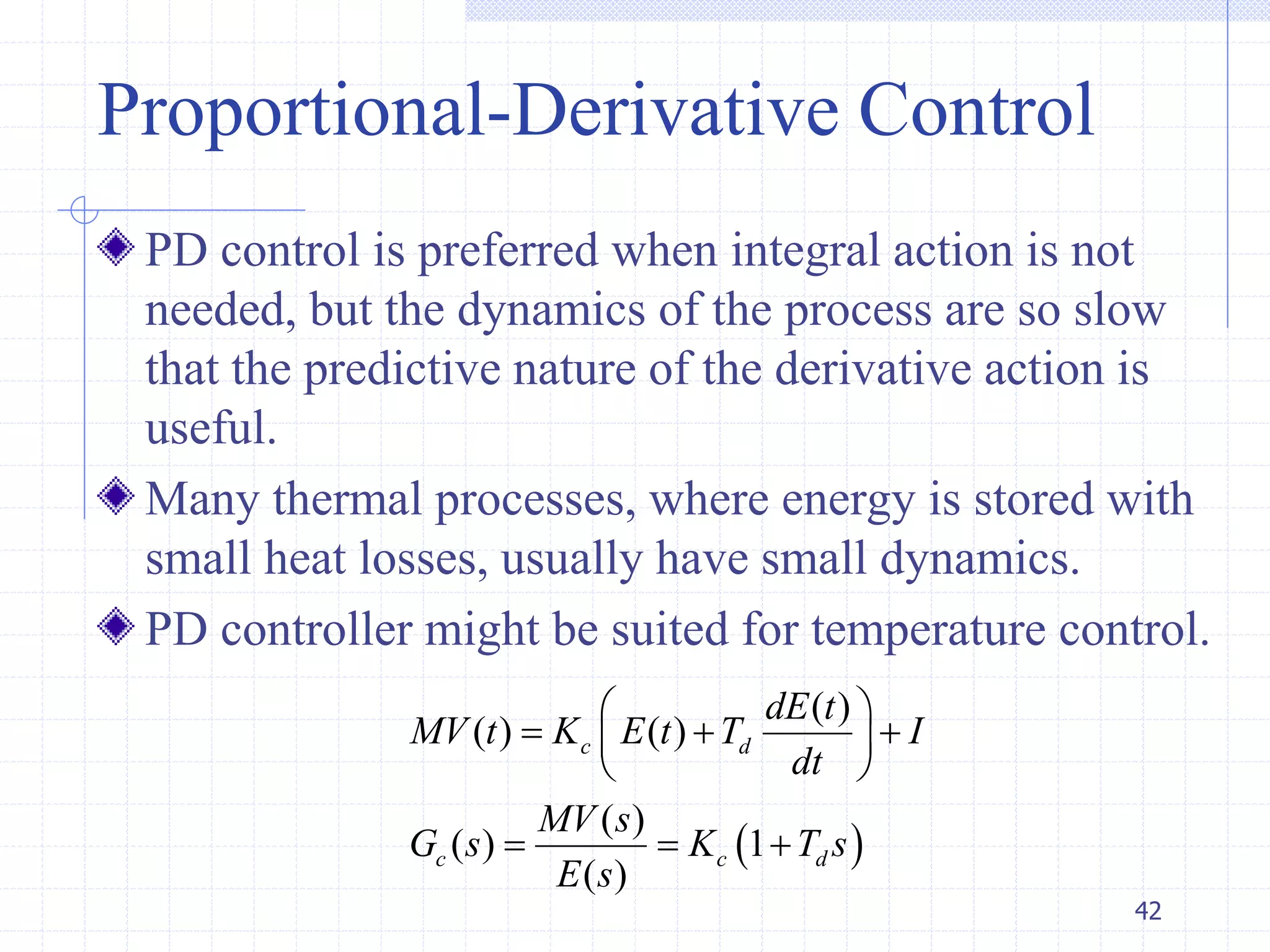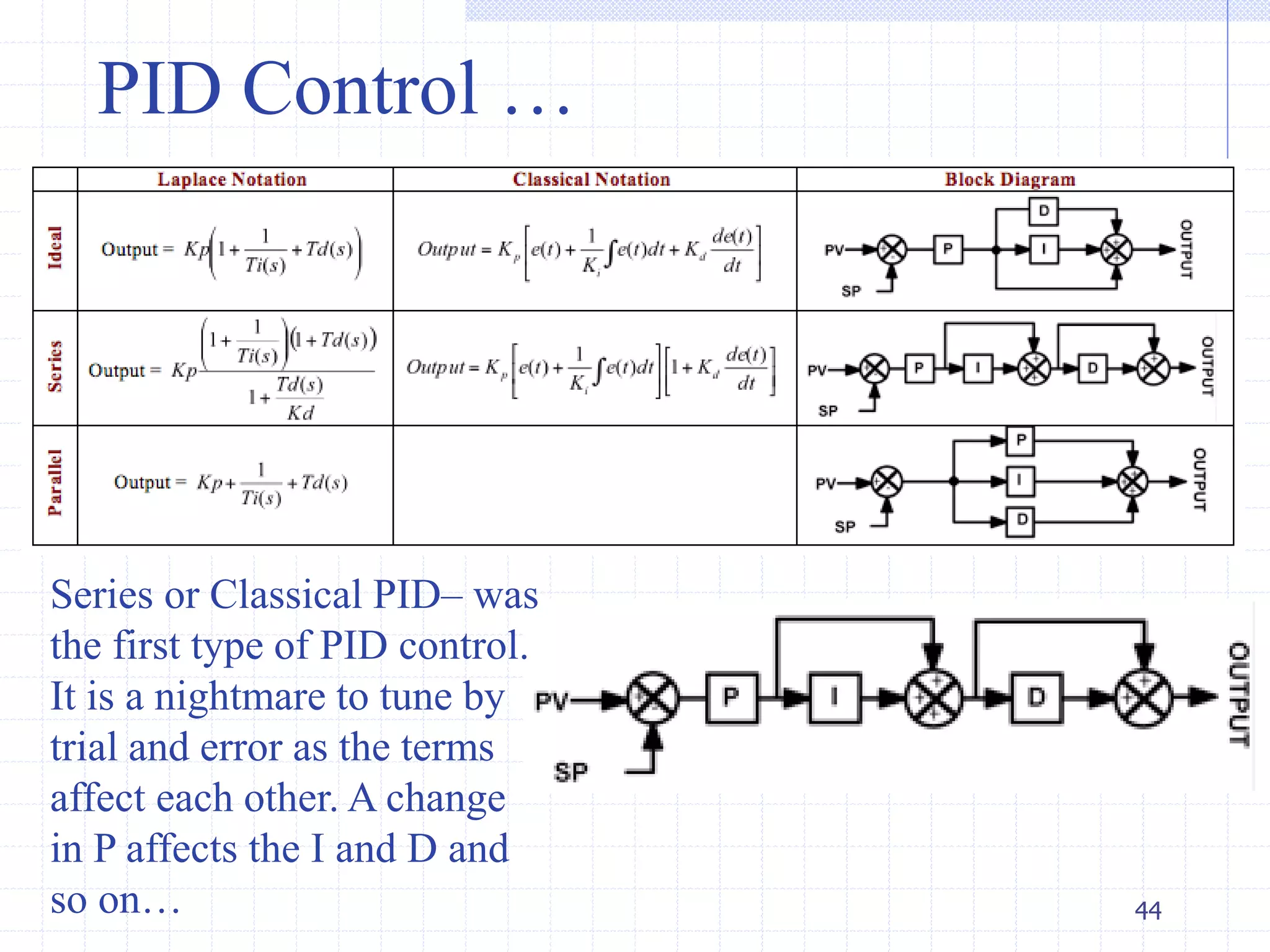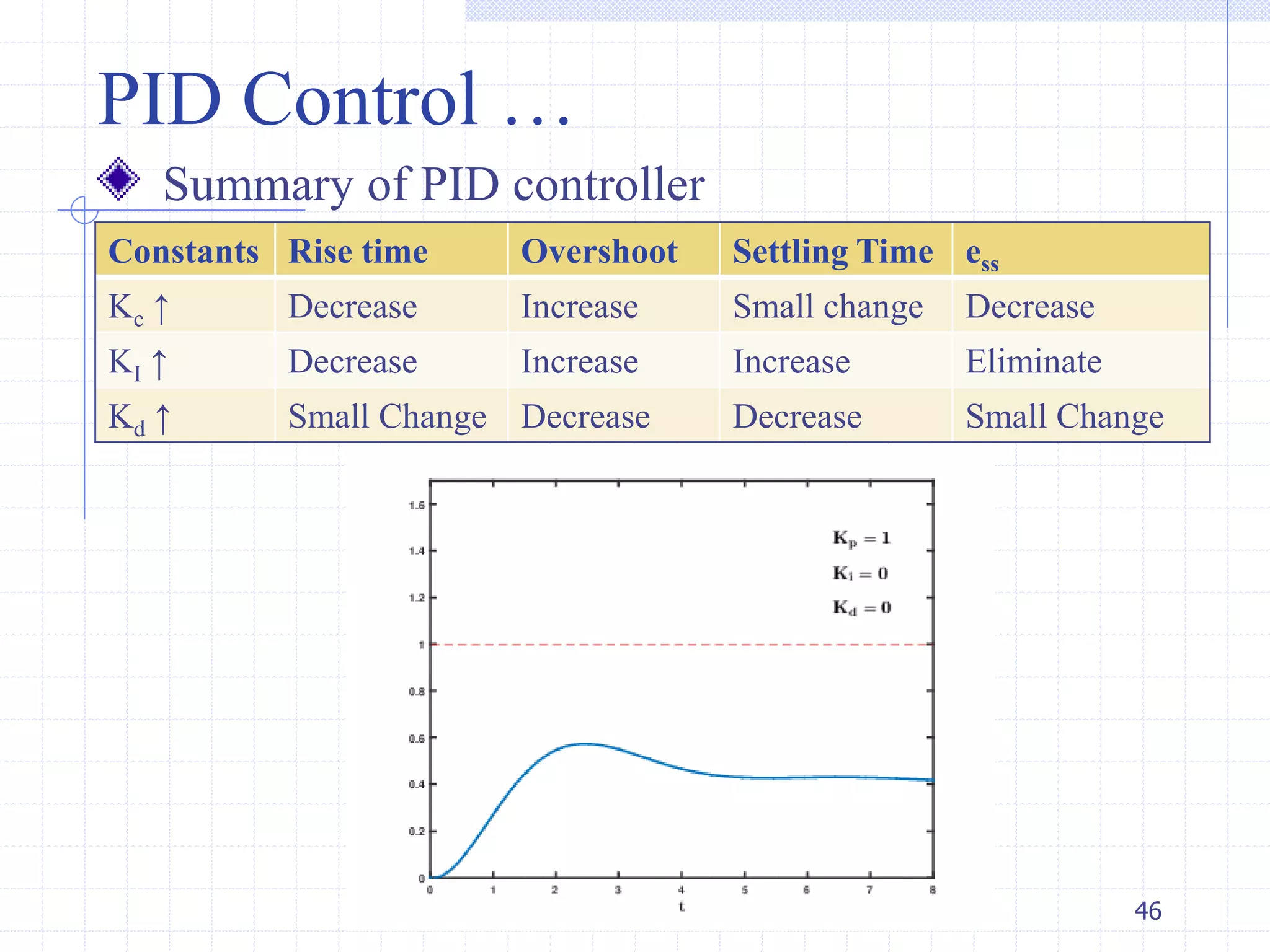This document provides an overview of process control tuning and PID control. It discusses the goals of controller tuning which are fast response and good stability, but these cannot be achieved simultaneously. PID control is then introduced which uses proportional, integral and derivative modes to achieve an acceptable compromise between stability and response speed. The key performance aspects of each control mode are explained. For proportional control, steady-state error is its main limitation. Integral control is used to eliminate this error over time by summing all past errors. Examples are also provided to demonstrate offset calculations for different control modes applied to a three-tank mixing process.
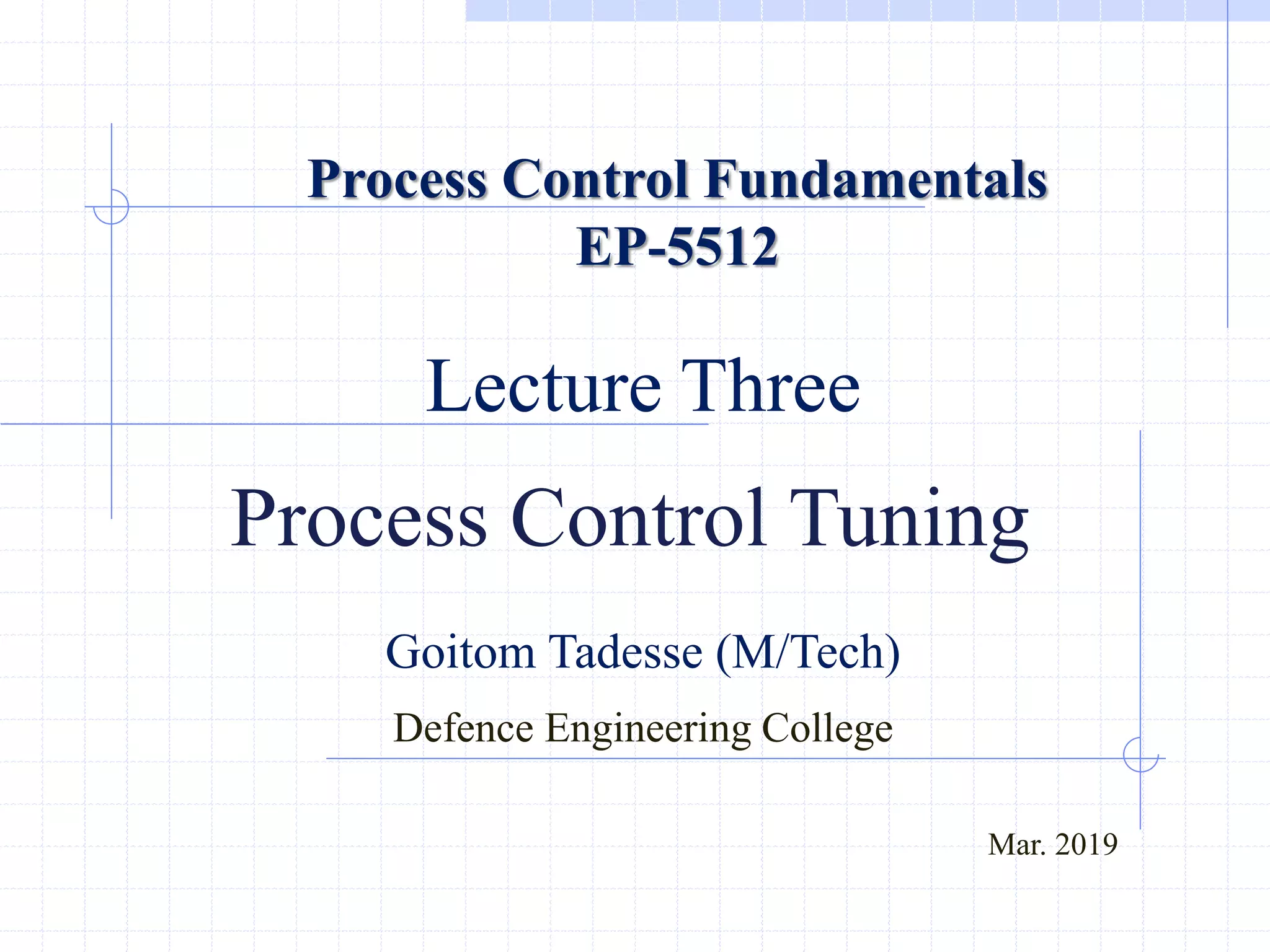
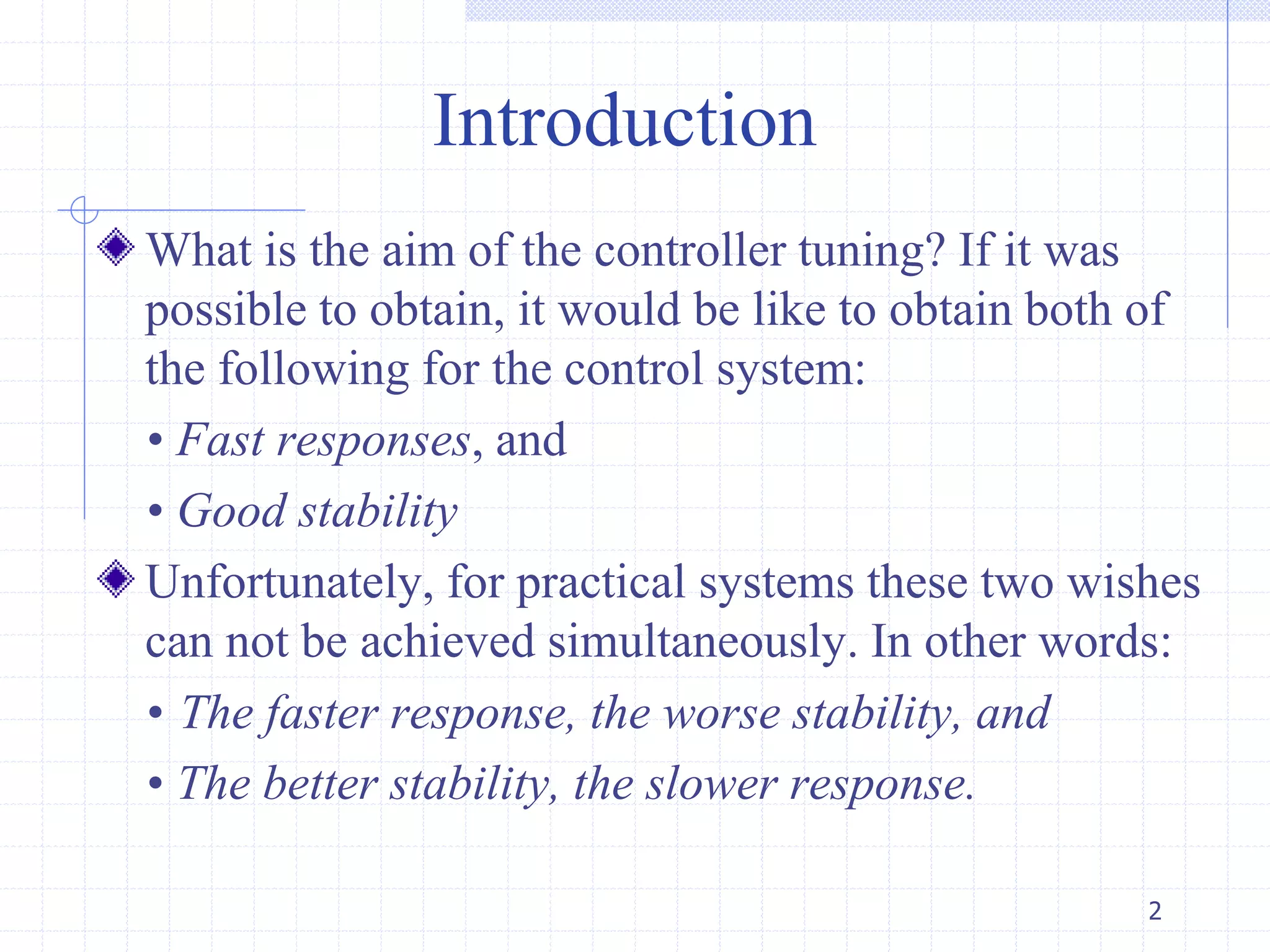

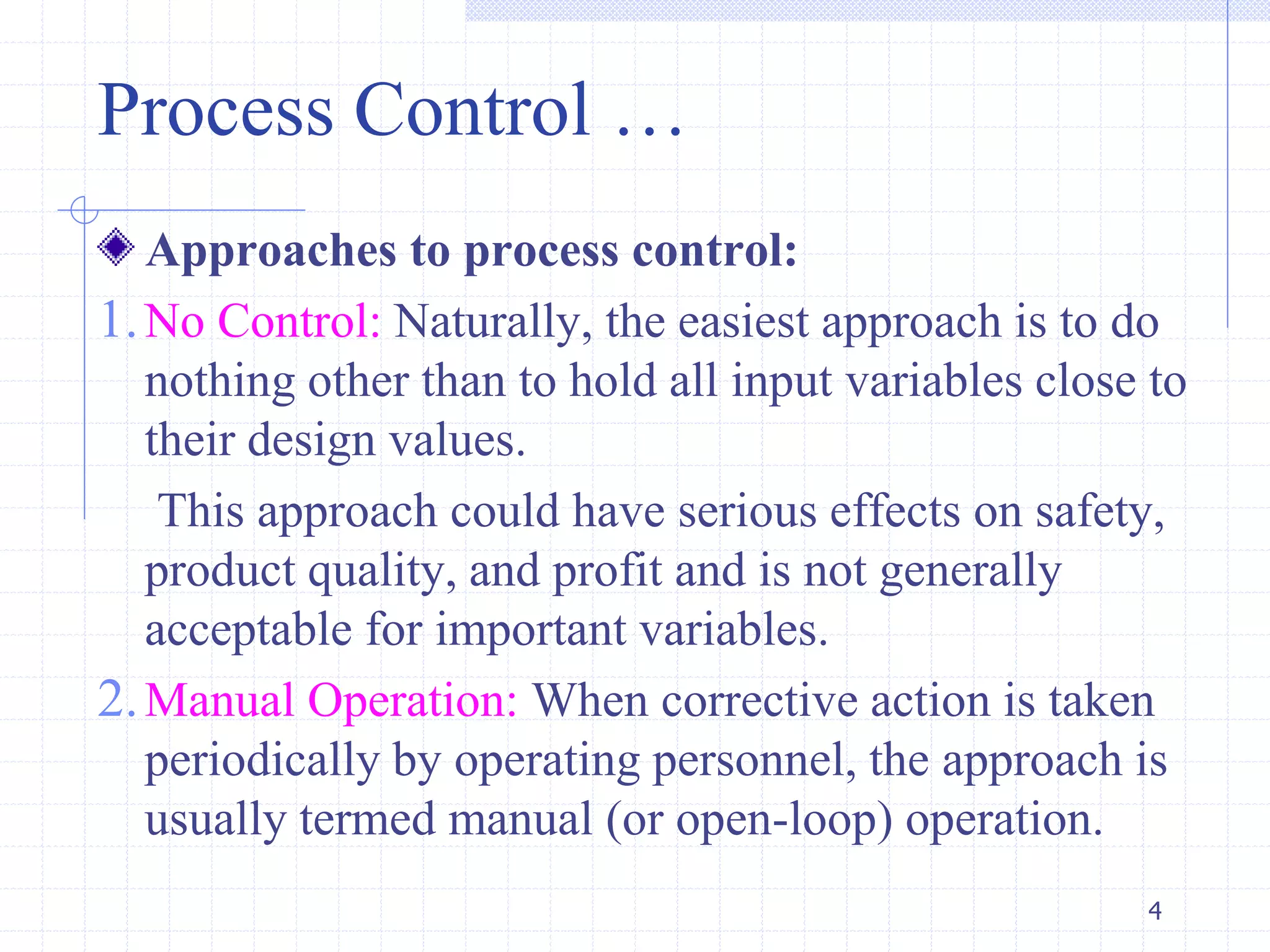
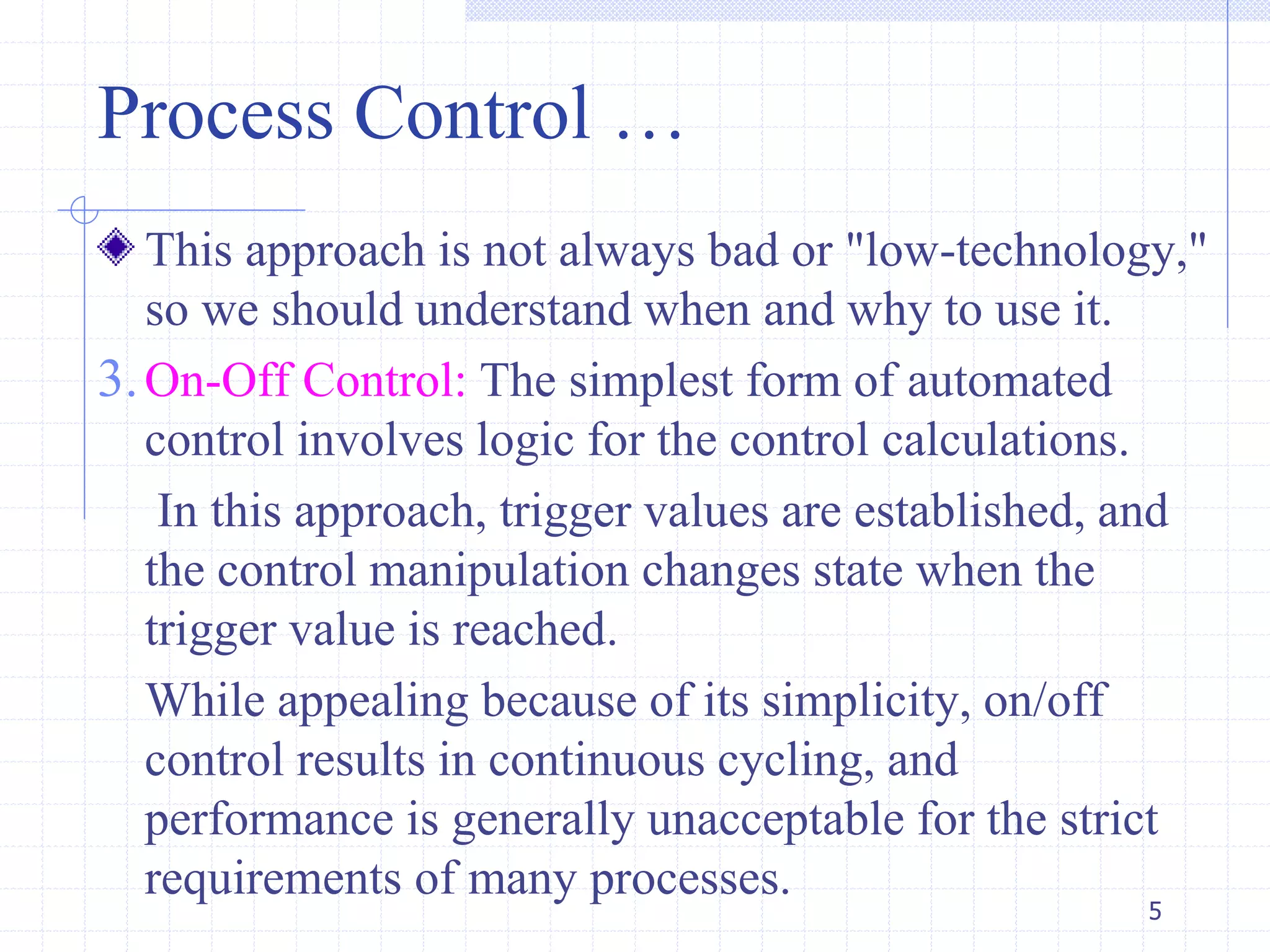

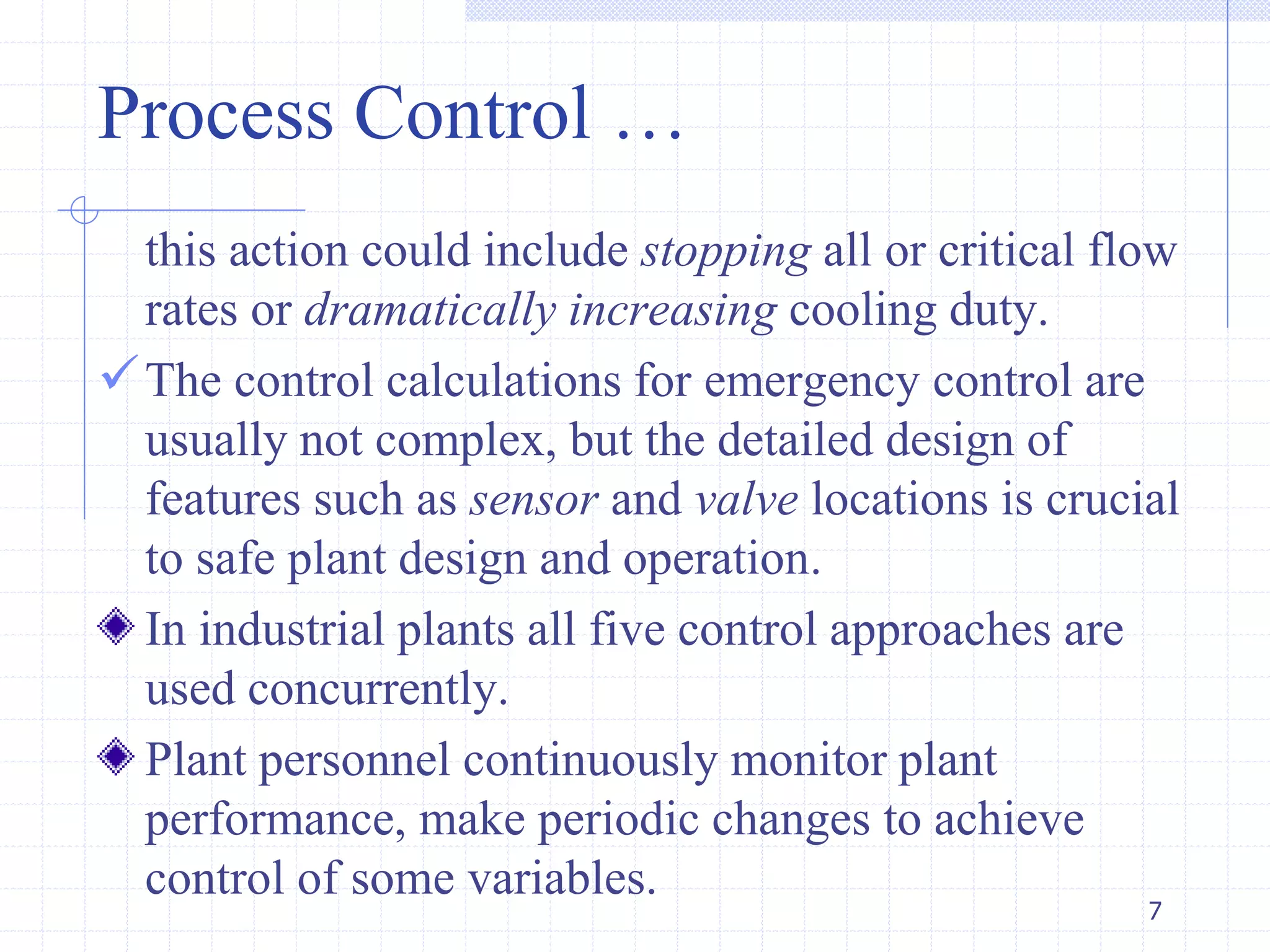
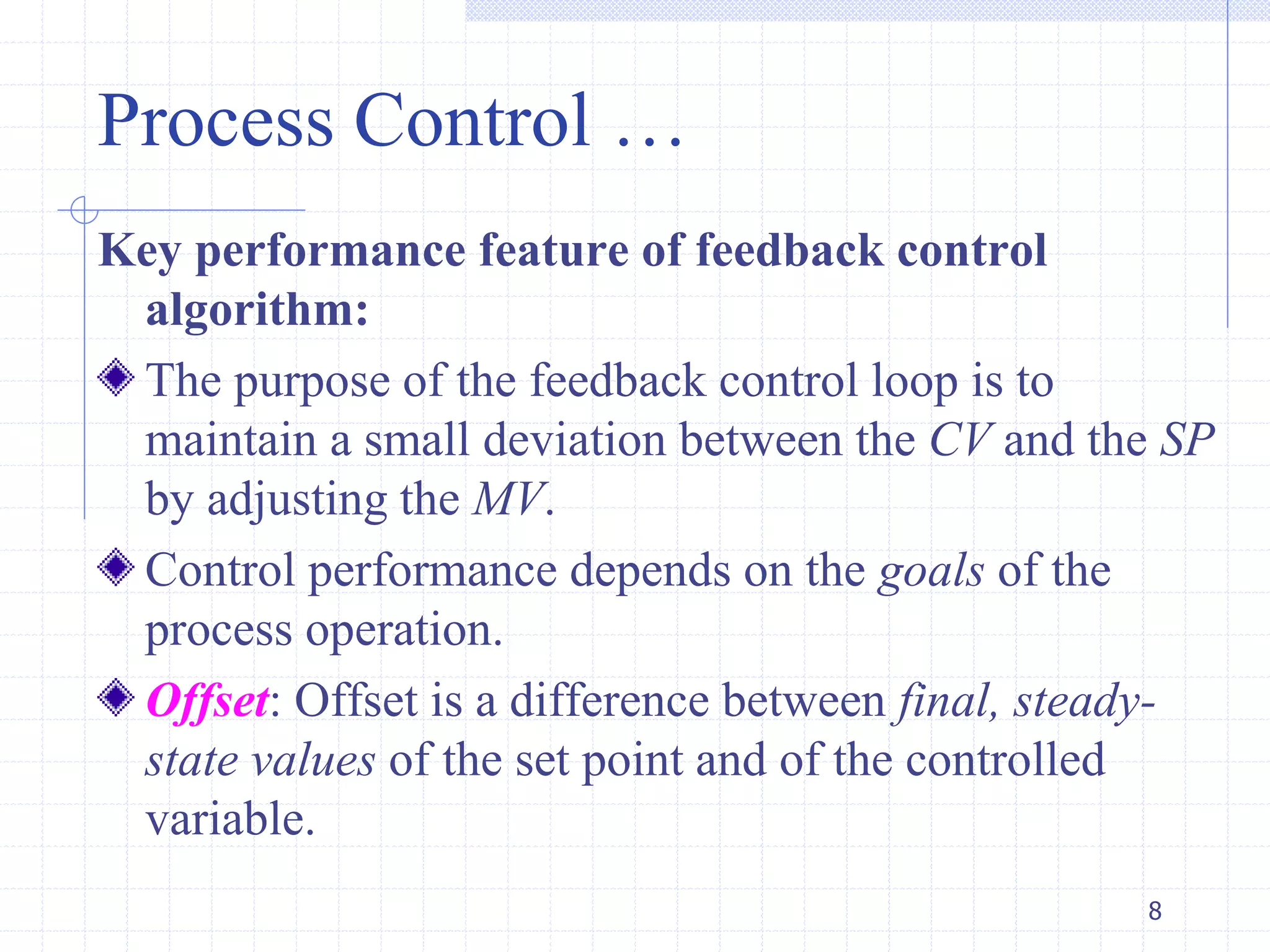
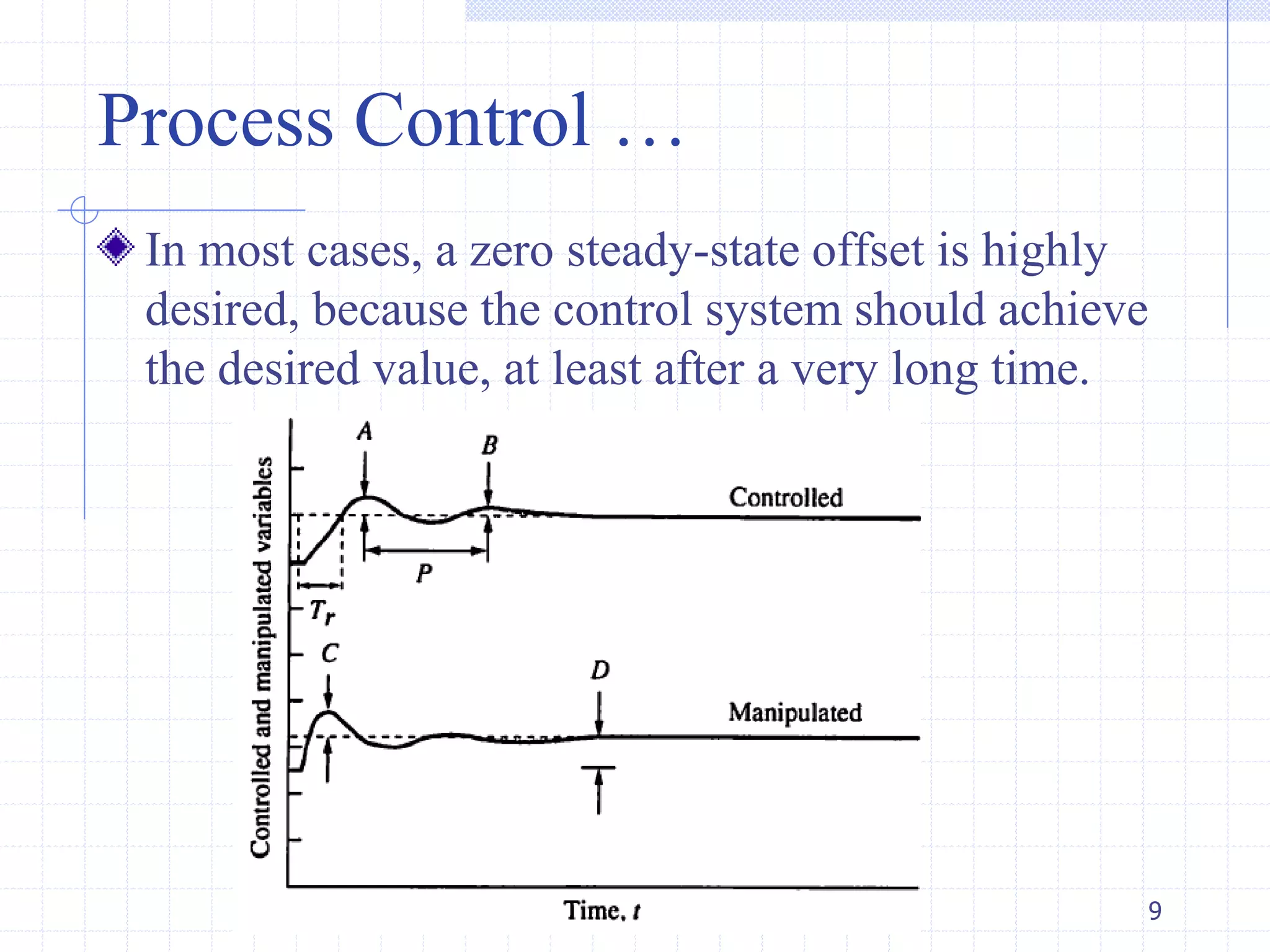
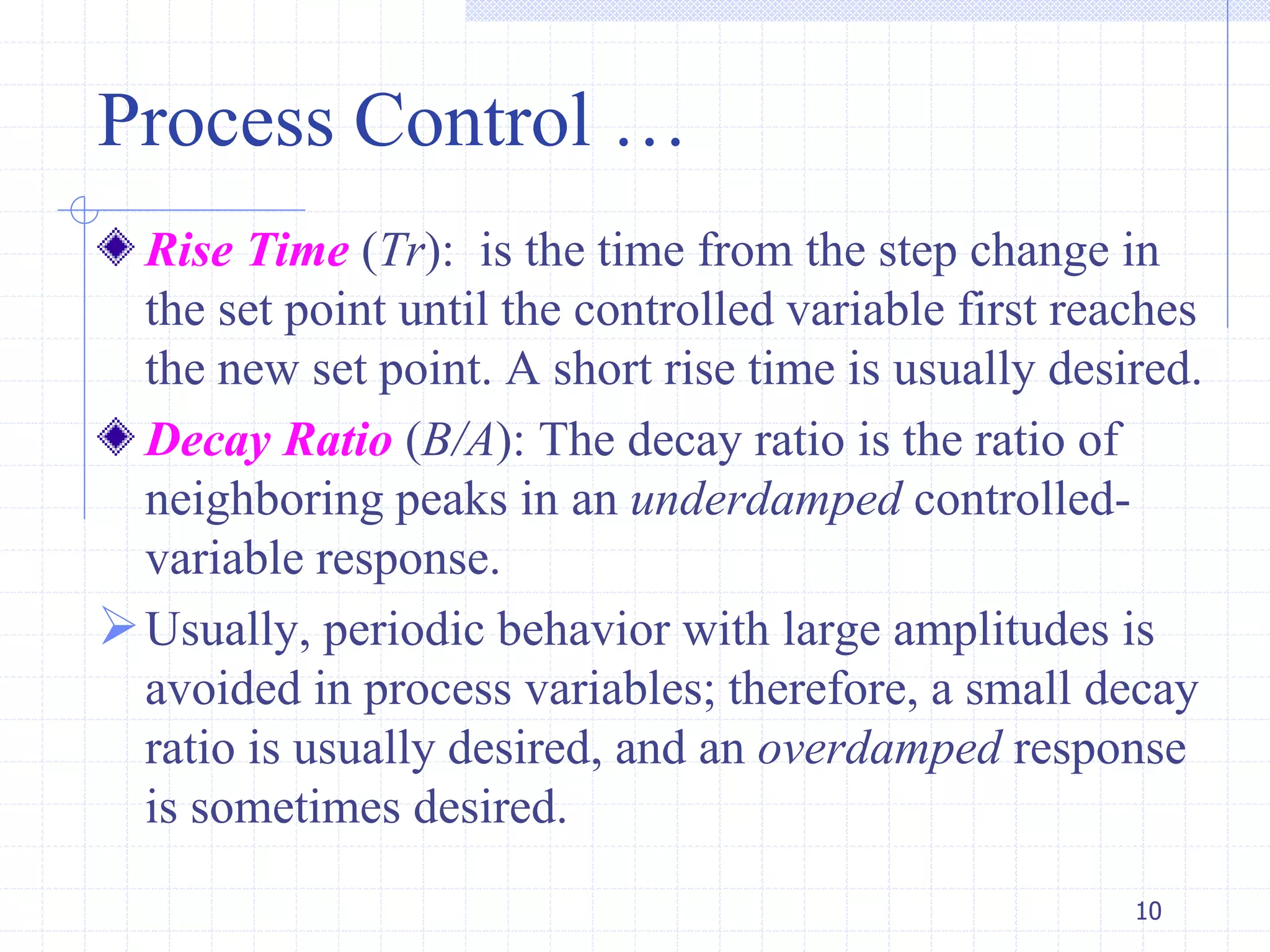
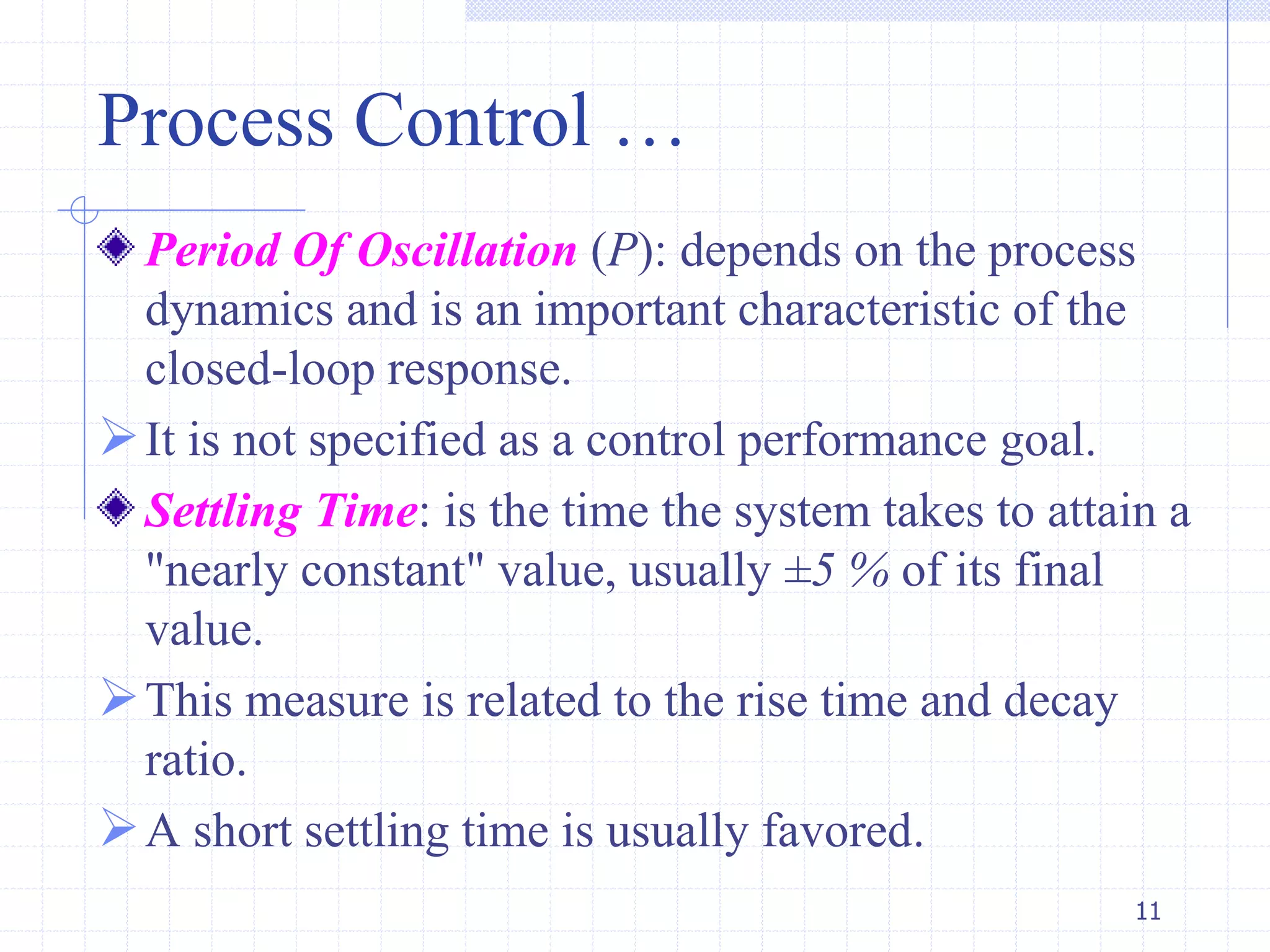
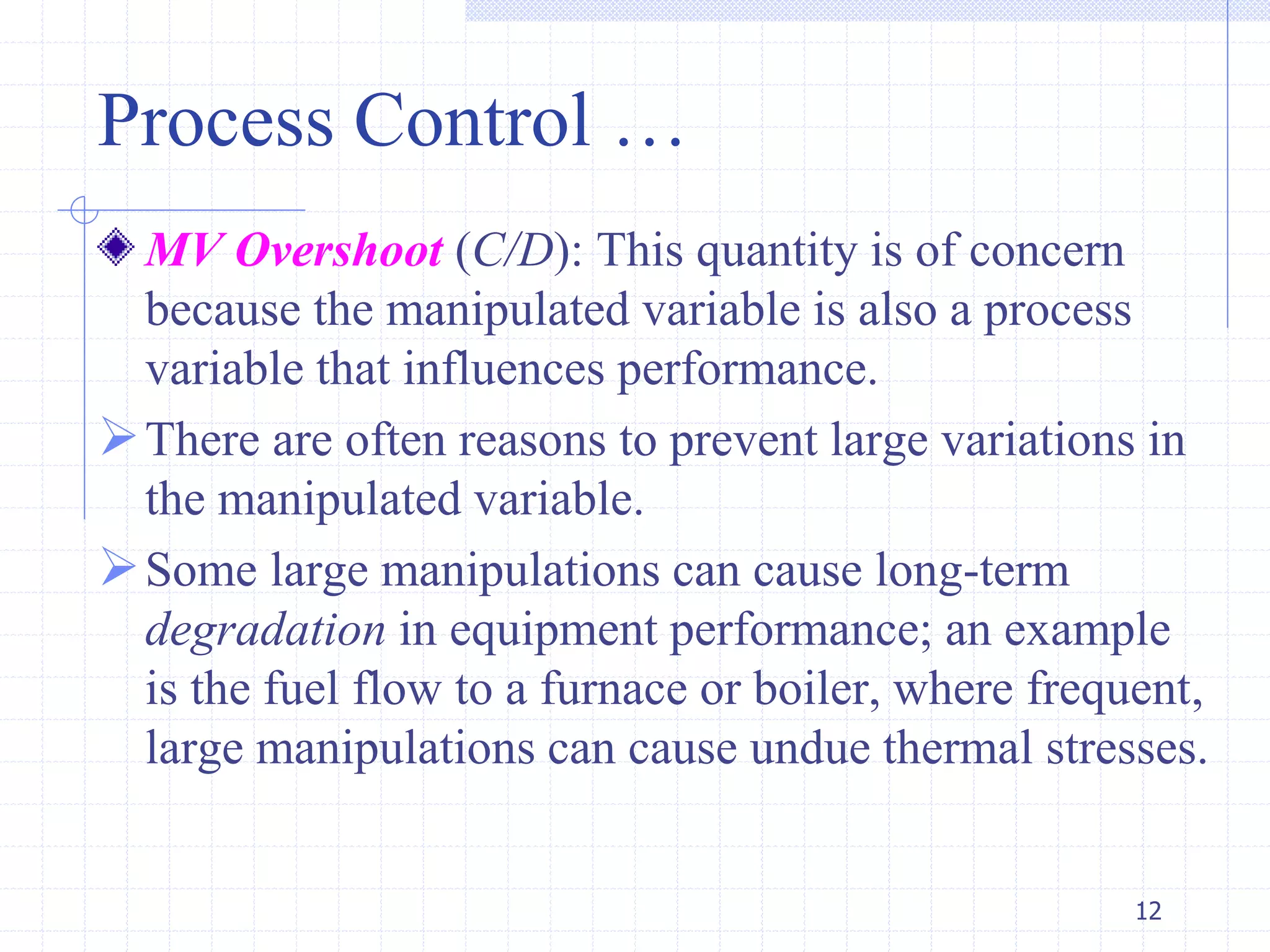
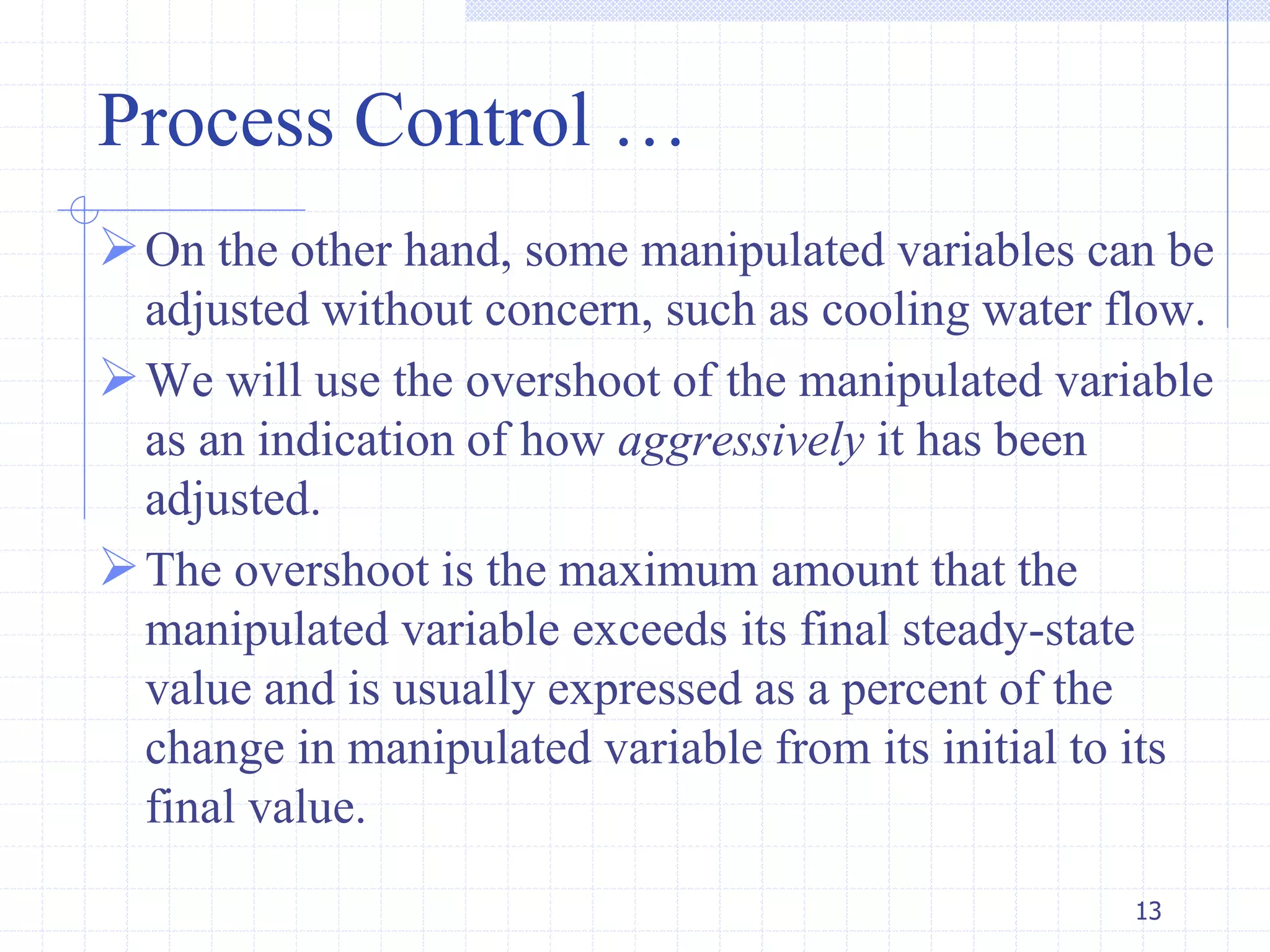
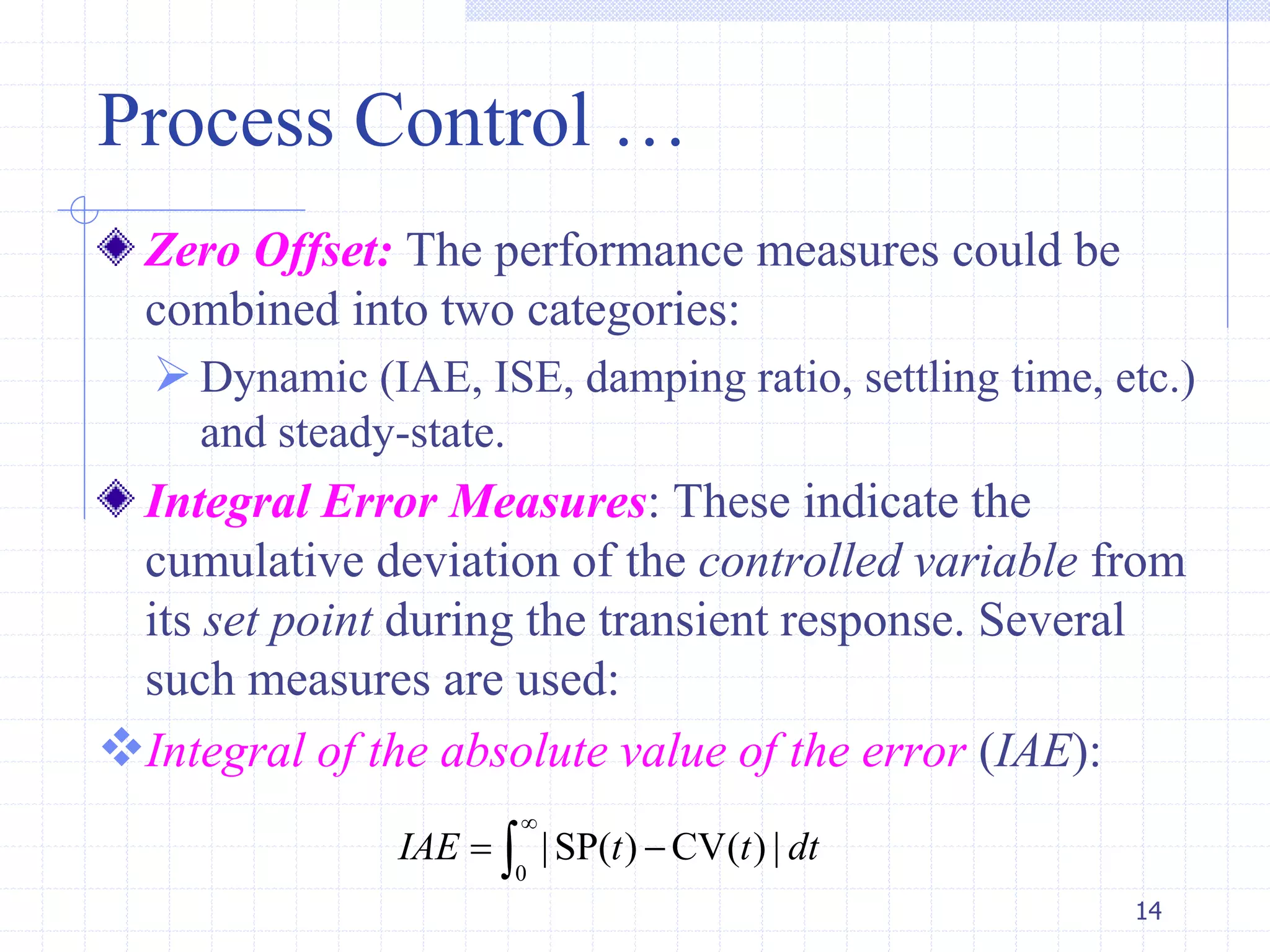
![Process Control …
The IAE is an easy value to analyze visually, because
it is the sum of areas above and below the set point.
It is an appropriate measure of control performance
when the effect on control performance is linear with
the deviation magnitude.
Integral of square of the error (ISE):
The ISE is appropriate when large deviations cause
greater performance degradation than small
deviations.
15
2
0
[SP( ) CV( )]ISE t t dt
](https://image.slidesharecdn.com/ep-5512lecture-03-190313233550/75/Ep-5512-lecture-03-15-2048.jpg)
![Process Control …
Integral of product of time and the absolute value of
error (ITAE):
The ITAE penalizes deviations that endure for a long
time.
Integral of the error (IE):
Note that IE is not used, because positive and
negative errors cancel in the integral, resulting in the
possibility for large positive and negative errors to
give a small IE. A small integral error measure (e.g.,
IAE) is desired. 16
0
|SP( ) CV( ) |ITAE t t t dt
0
[SP( ) CV( )]IE t t dt
](https://image.slidesharecdn.com/ep-5512lecture-03-190313233550/75/Ep-5512-lecture-03-16-2048.jpg)
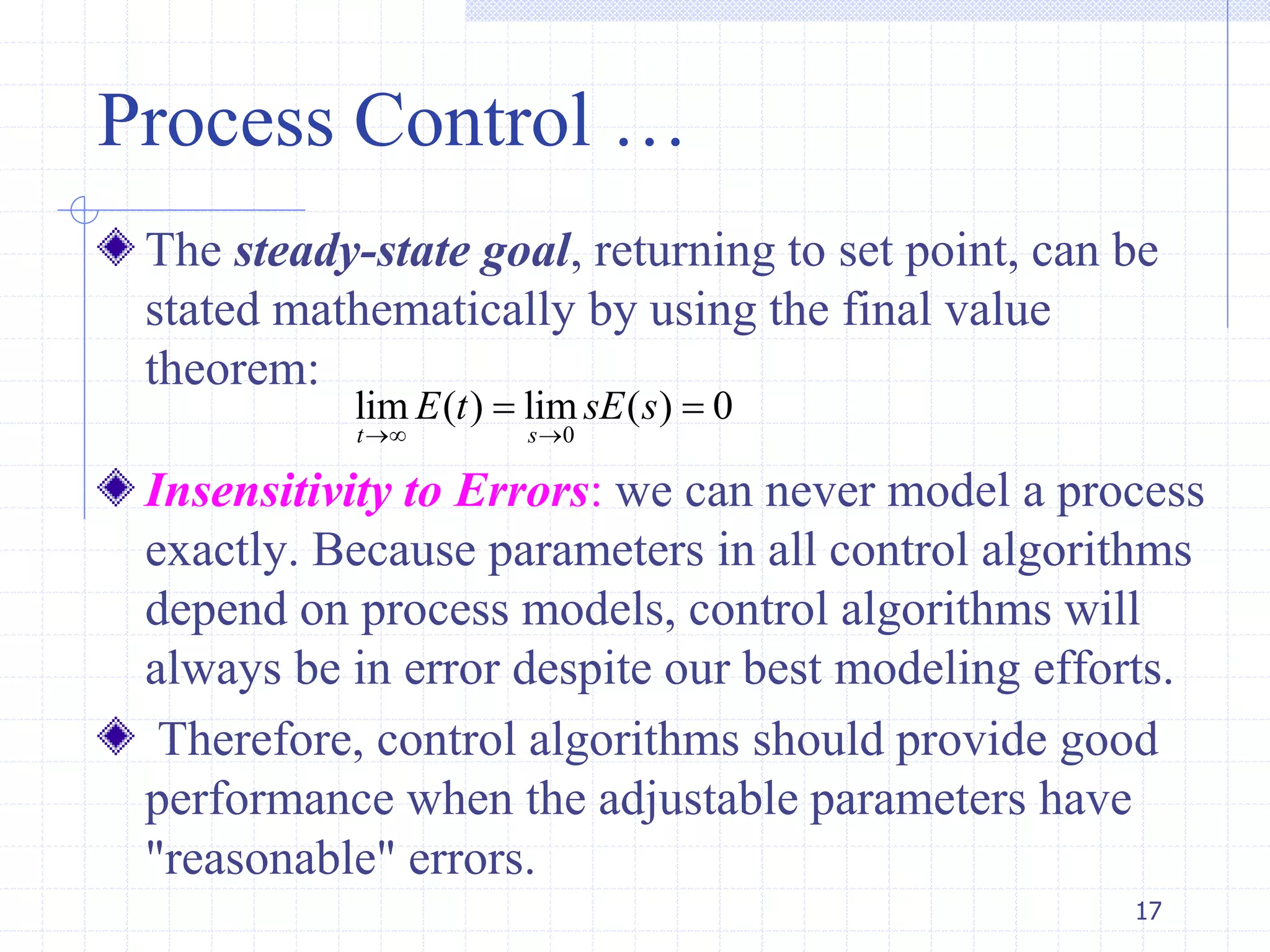
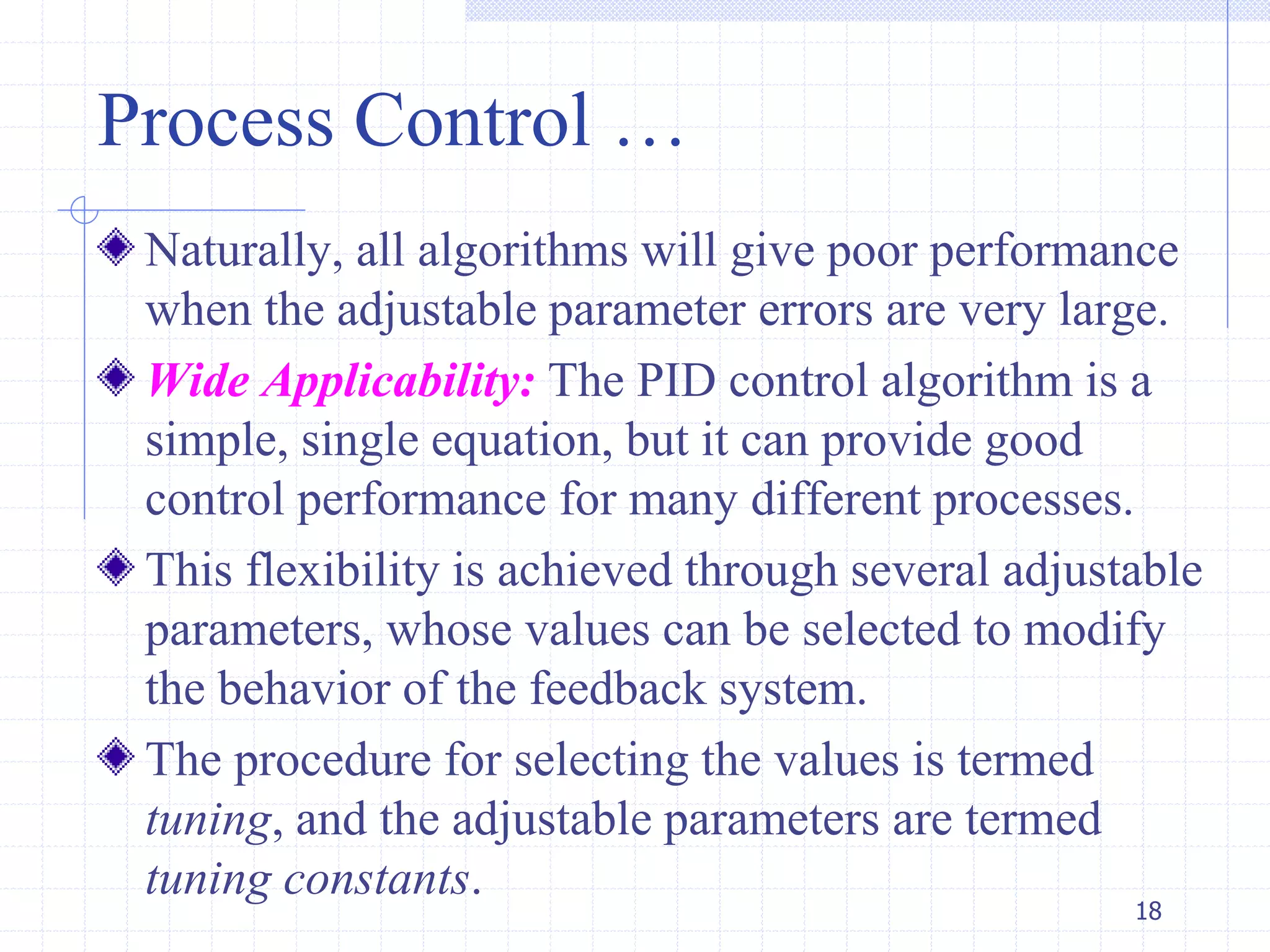
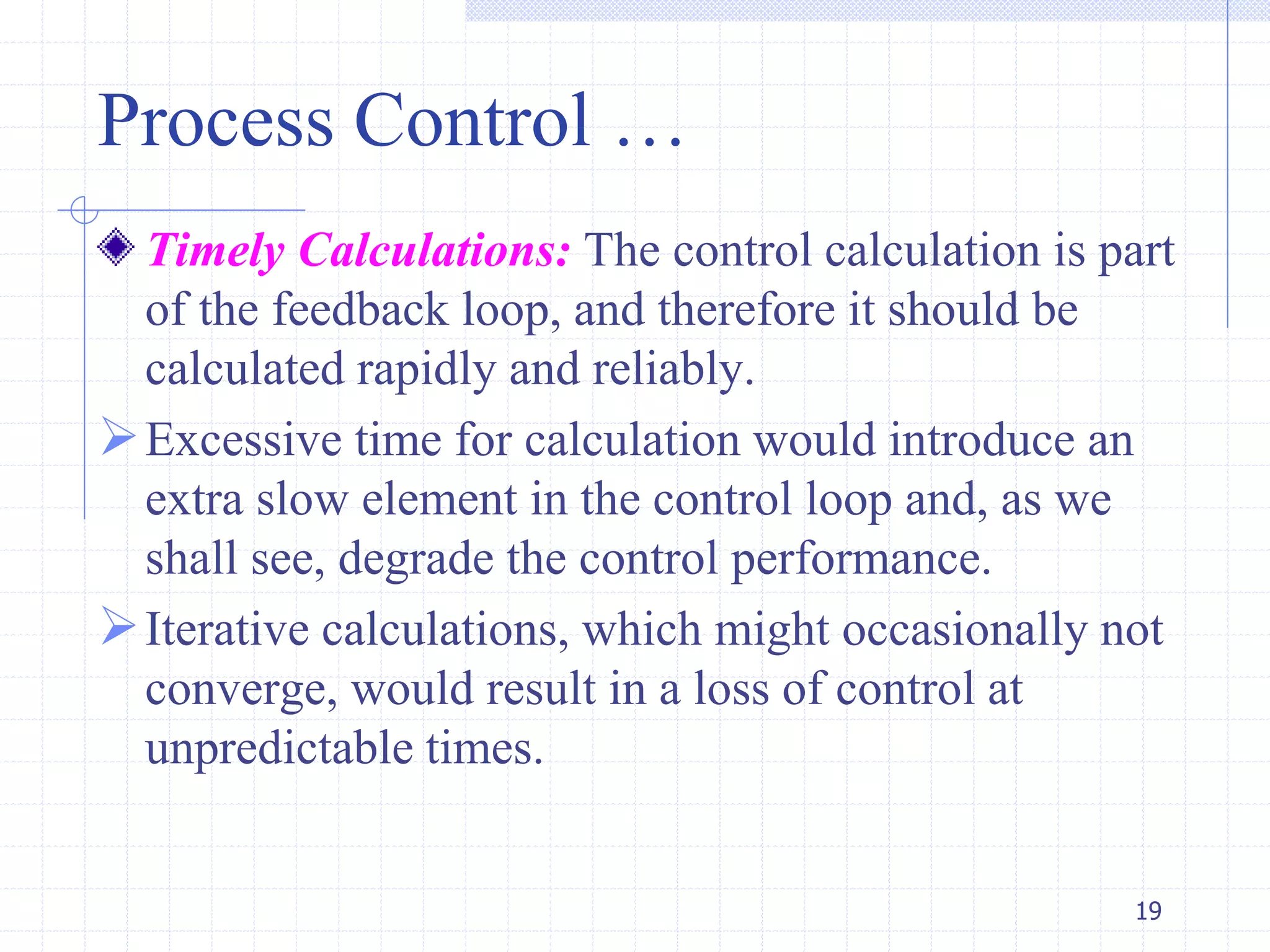



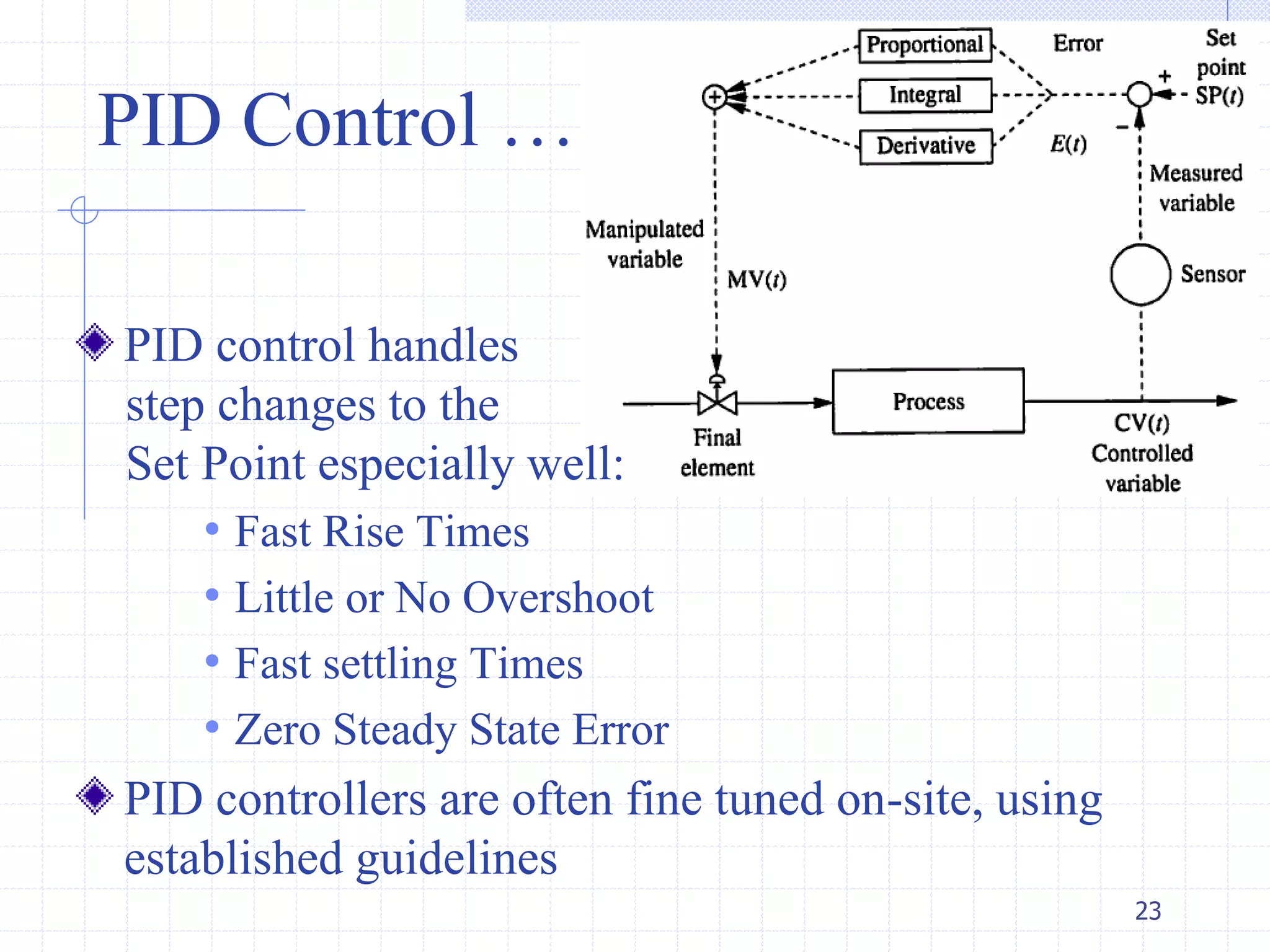
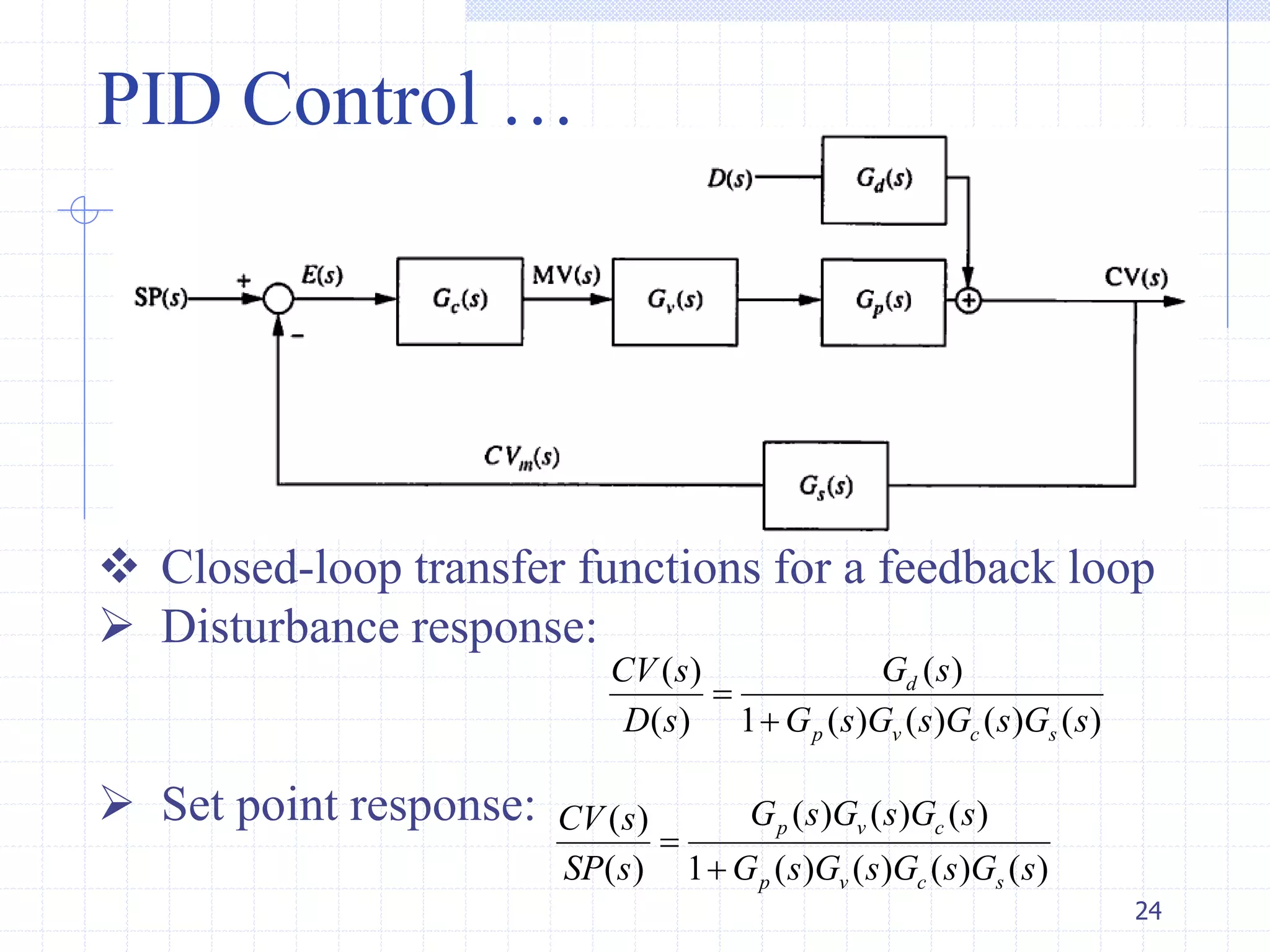
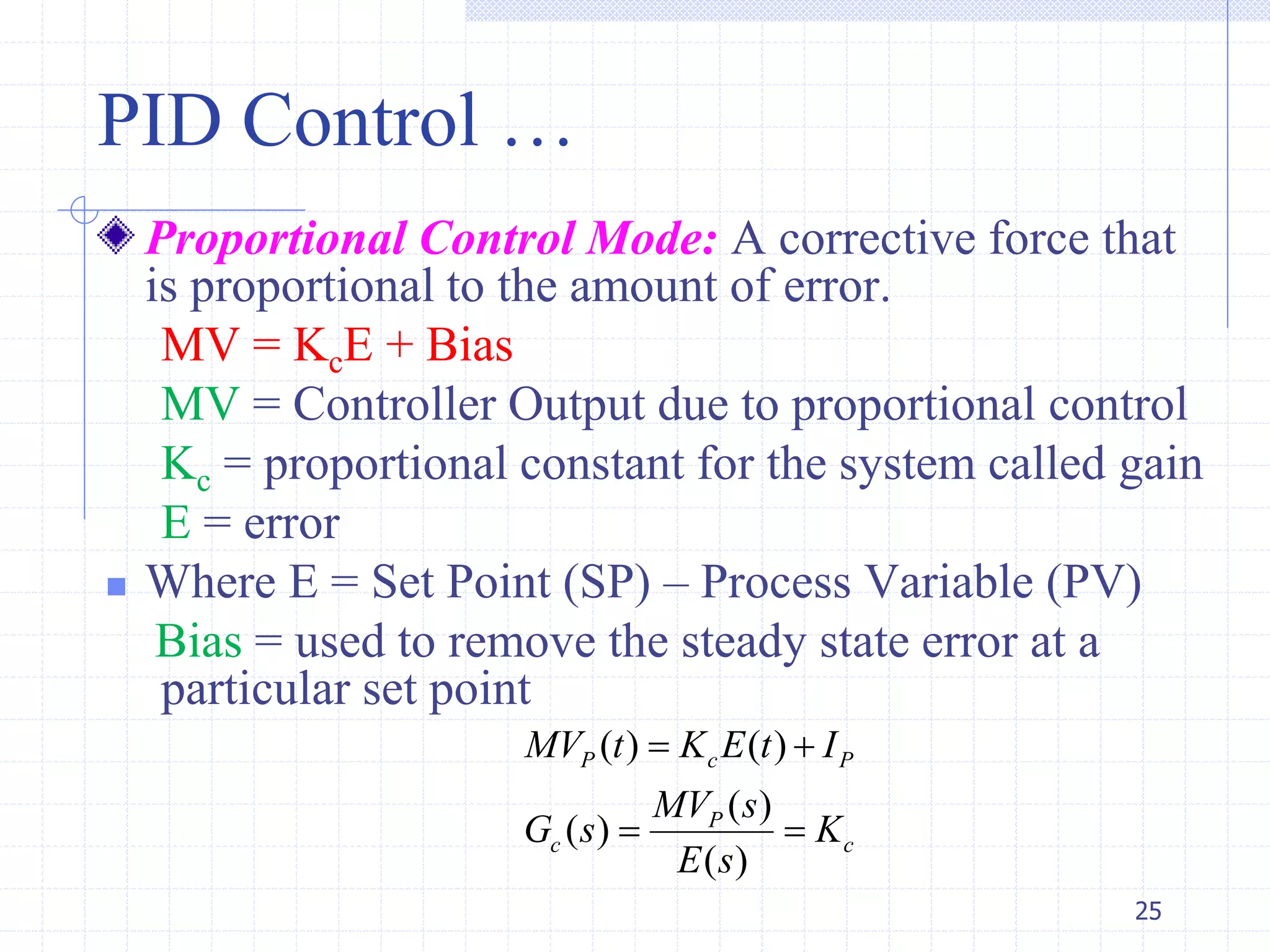
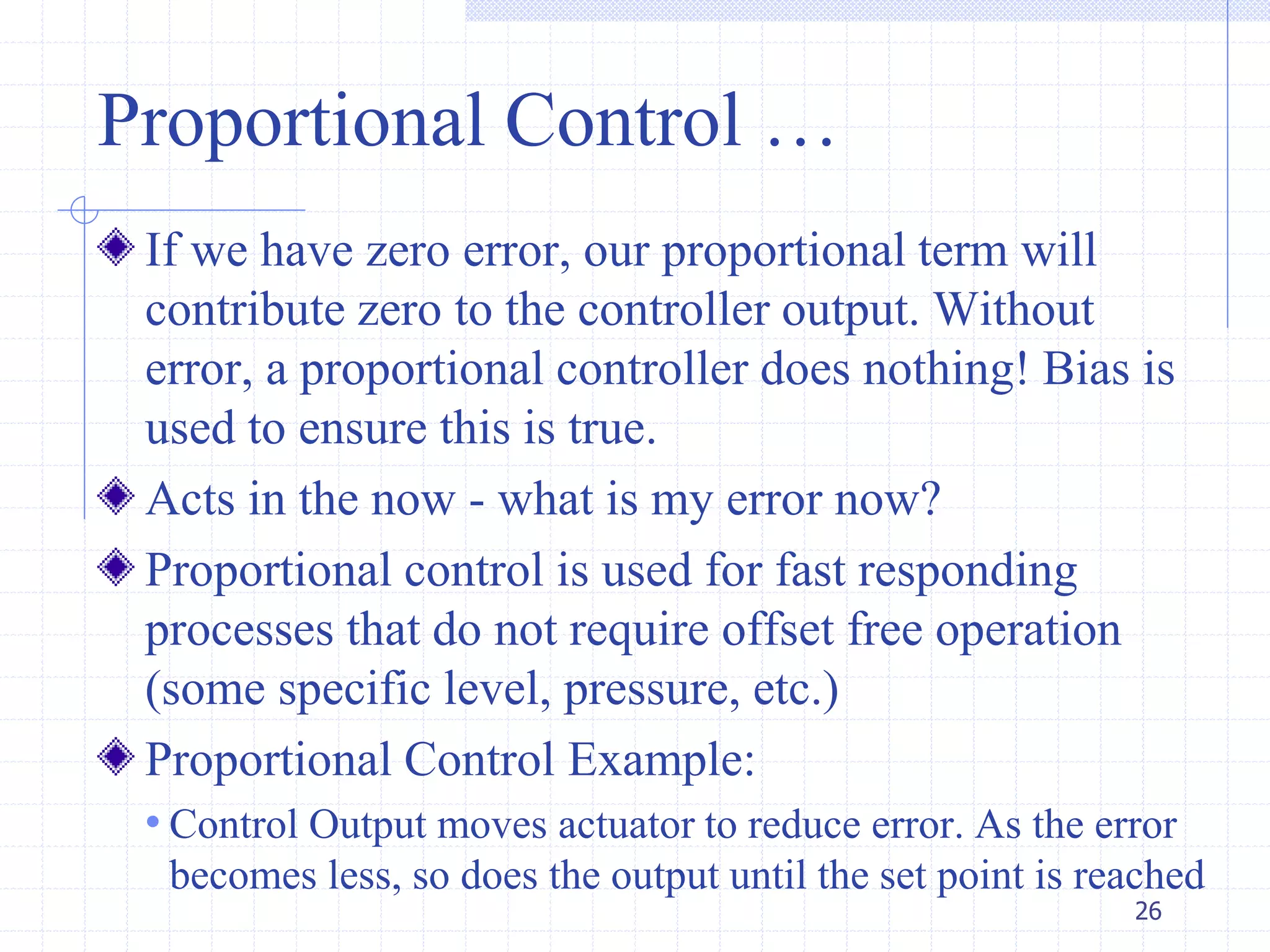
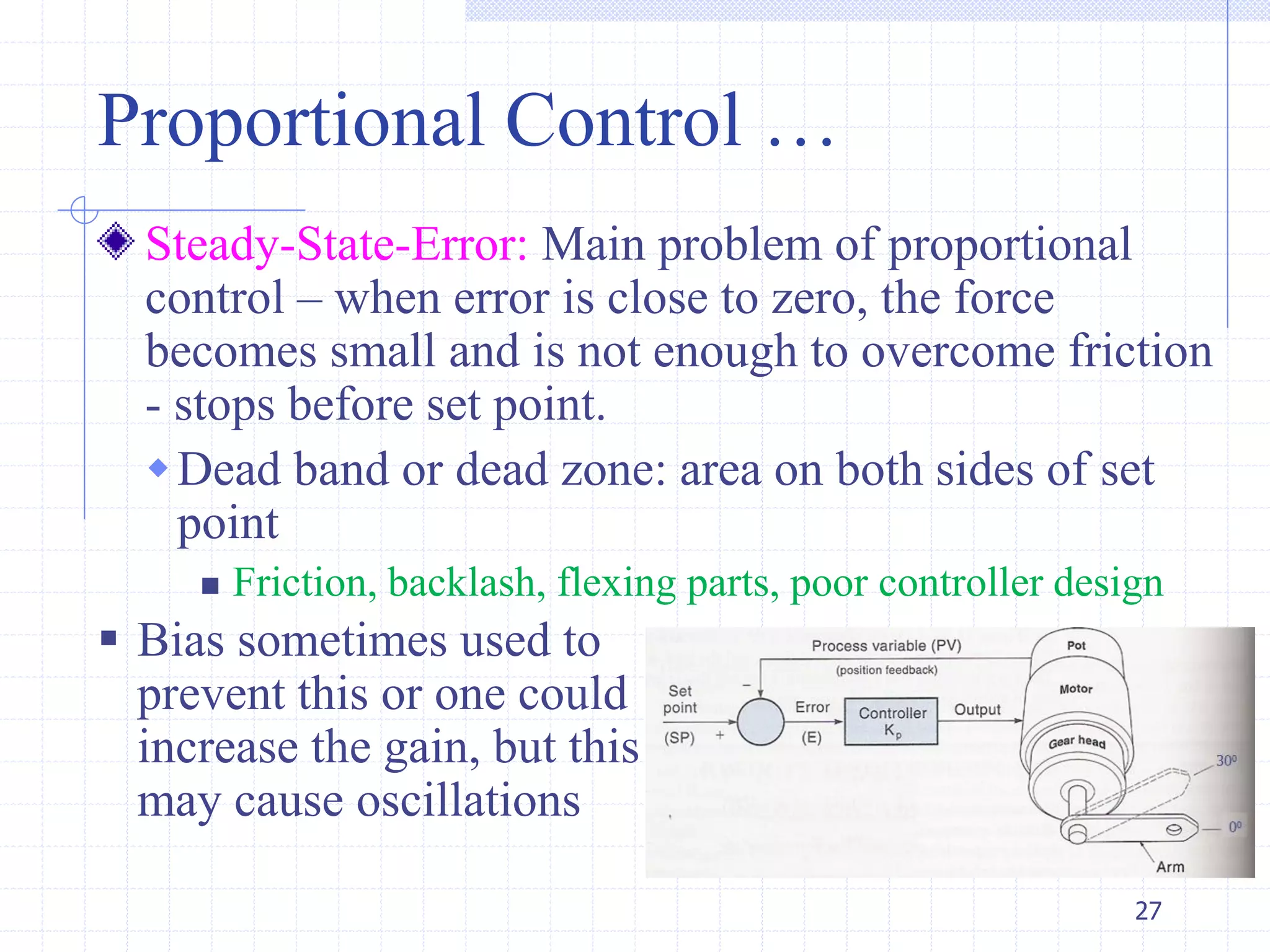
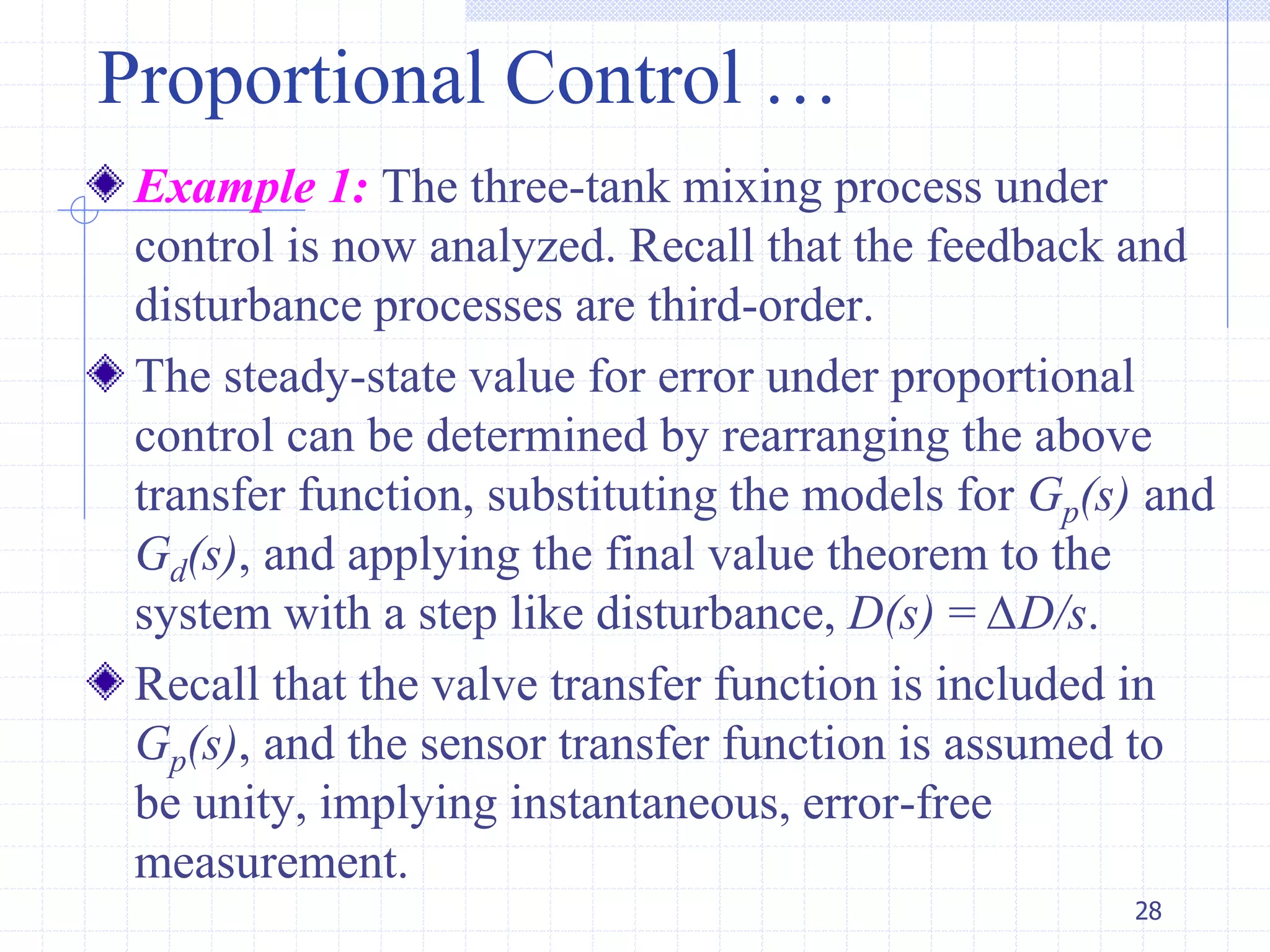
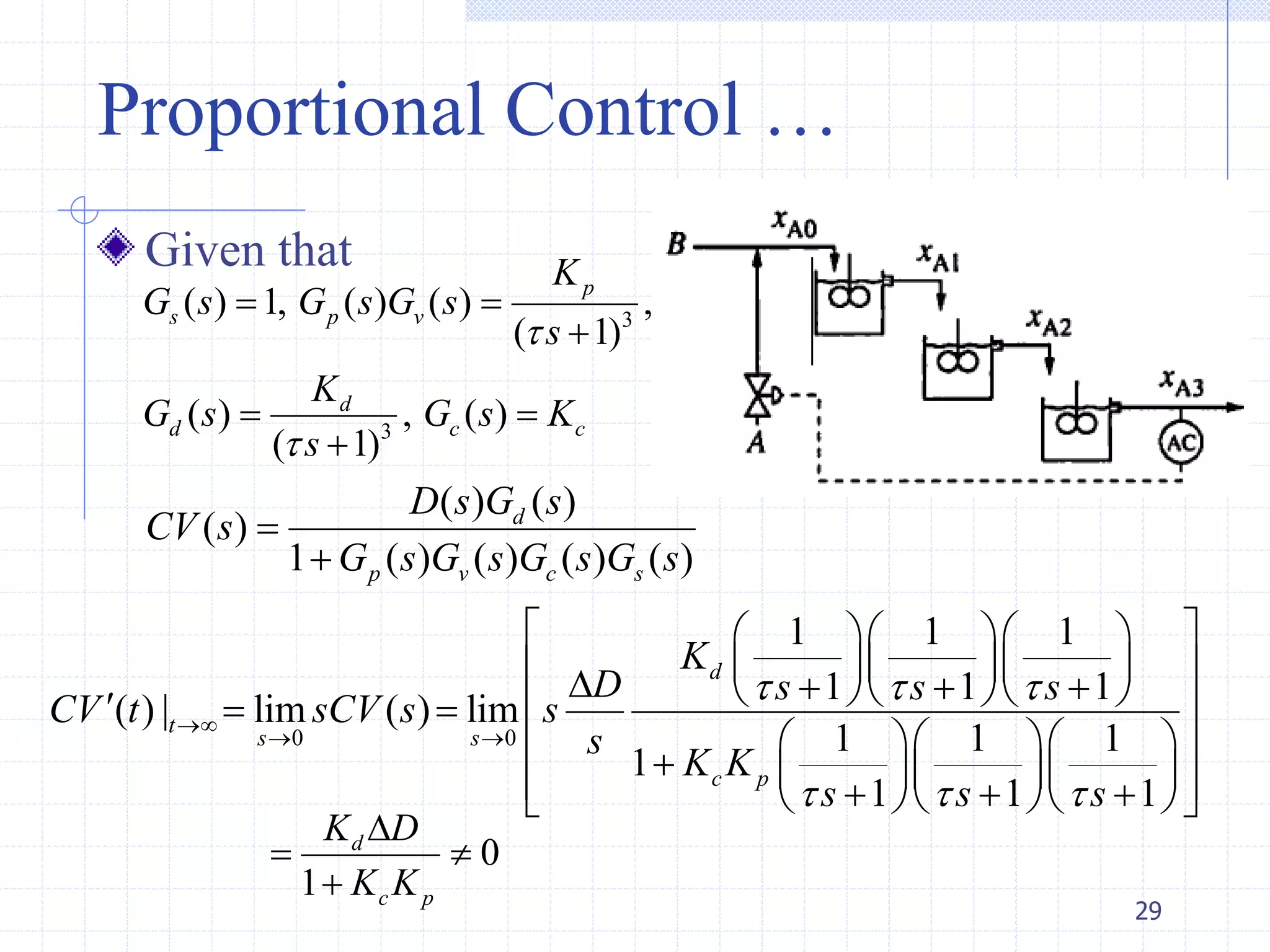
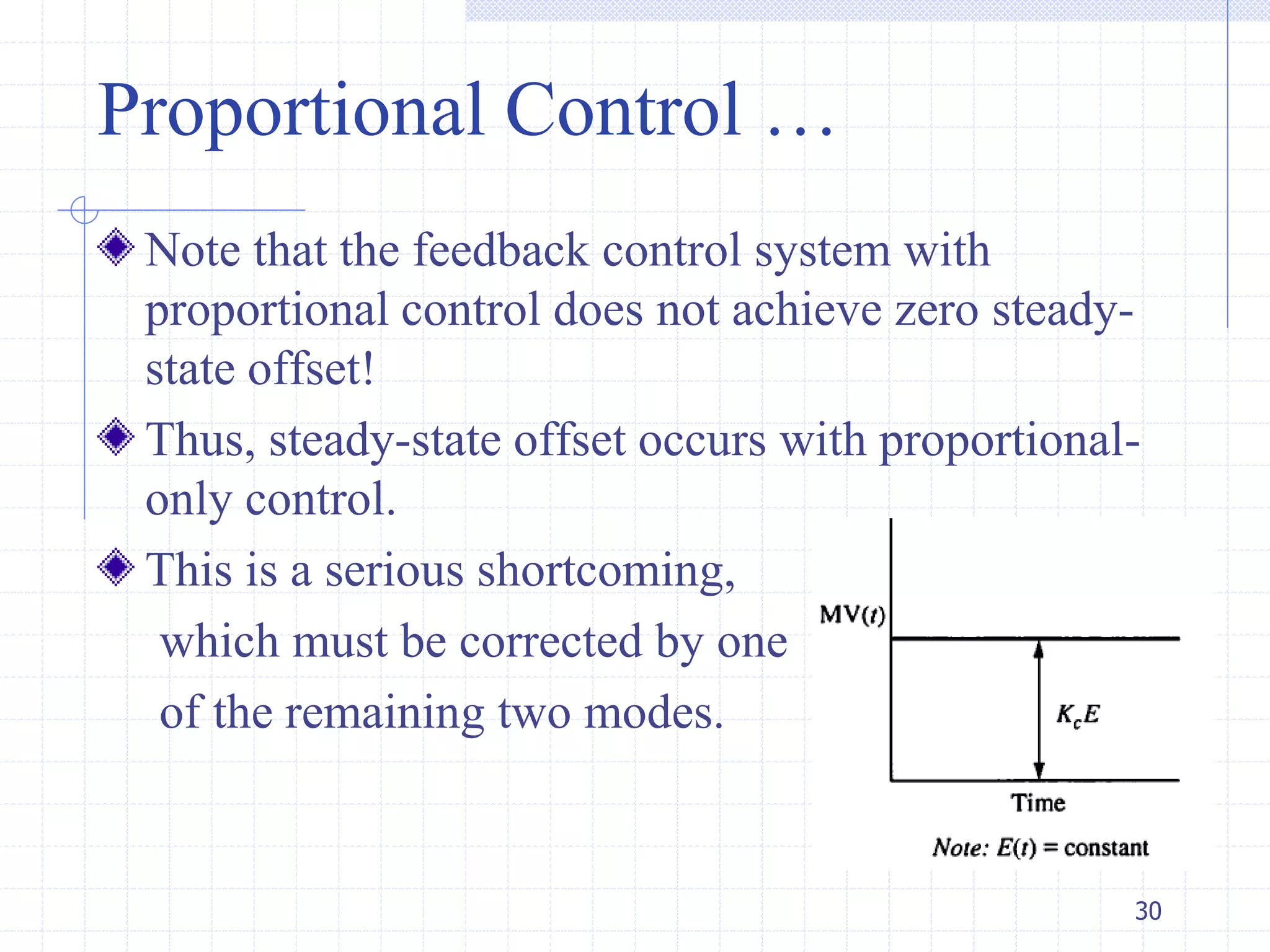
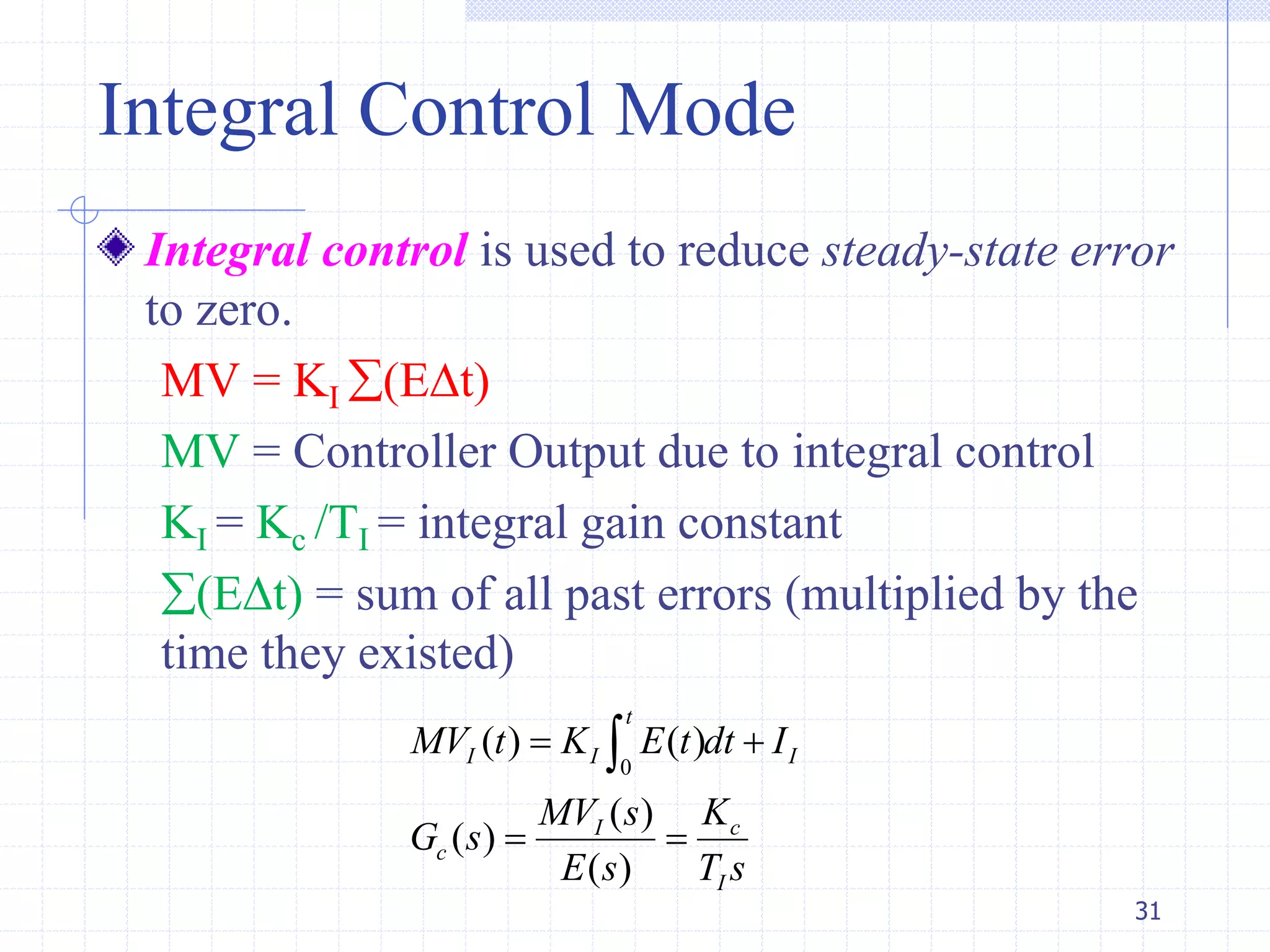
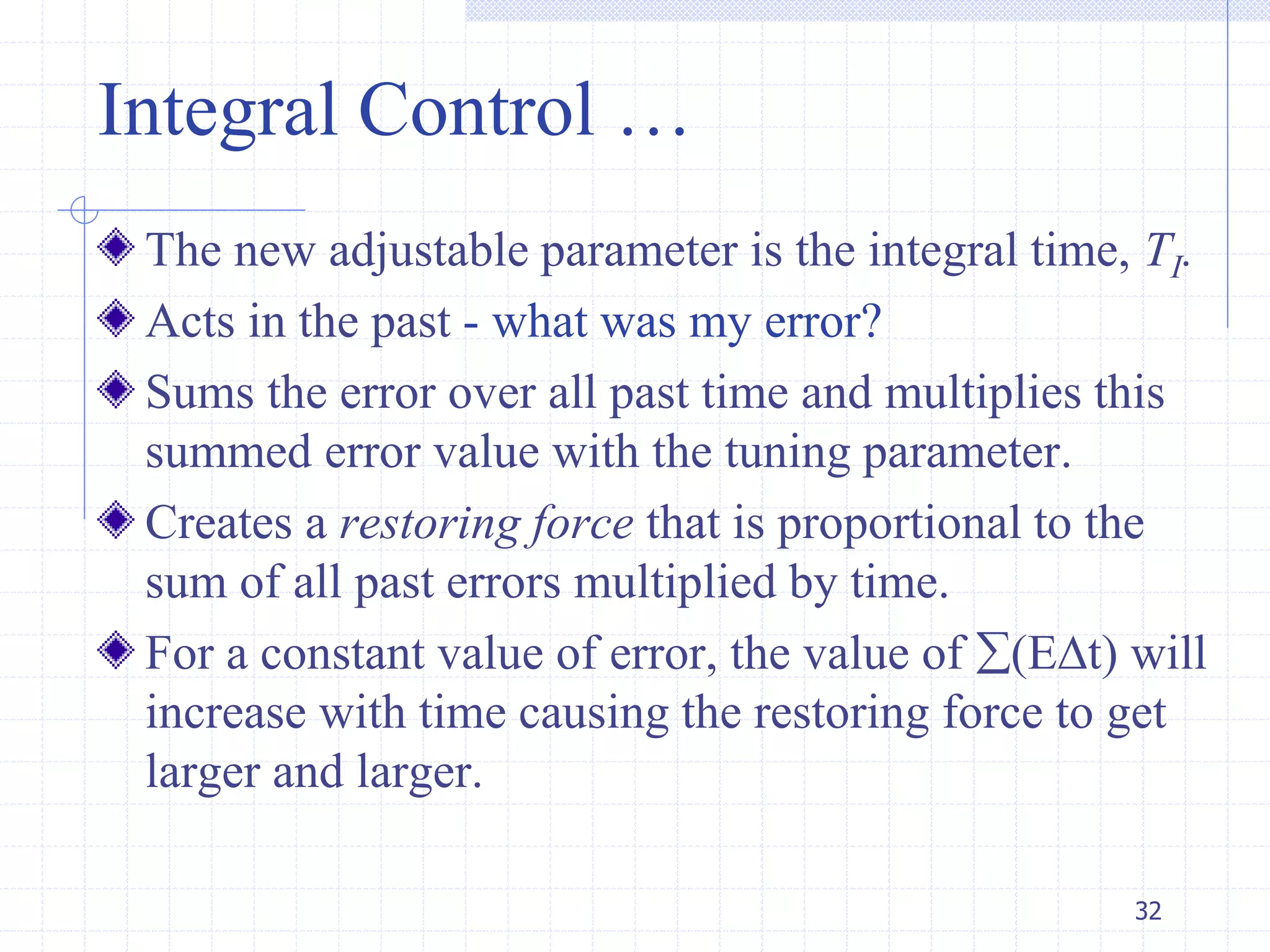
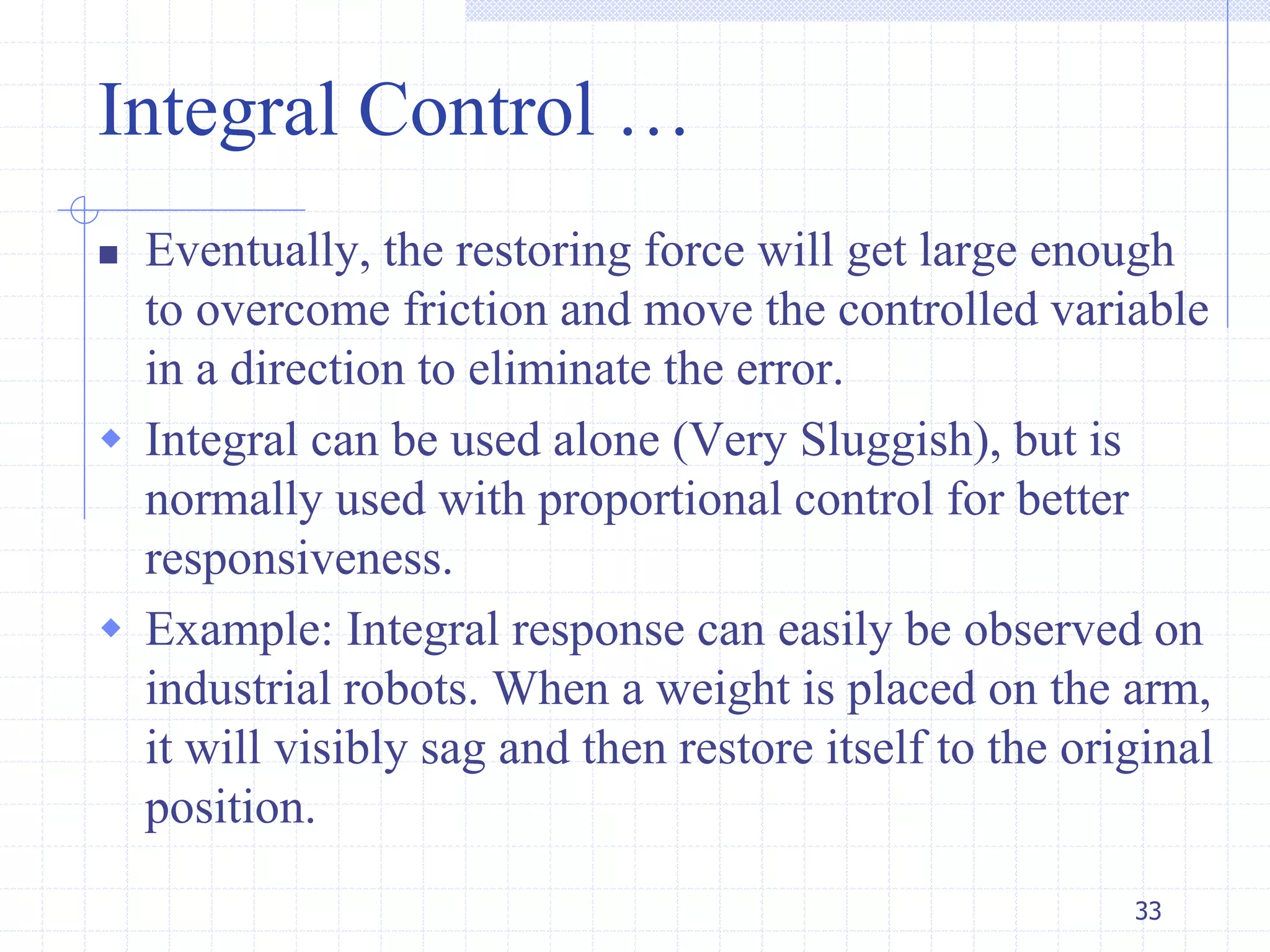


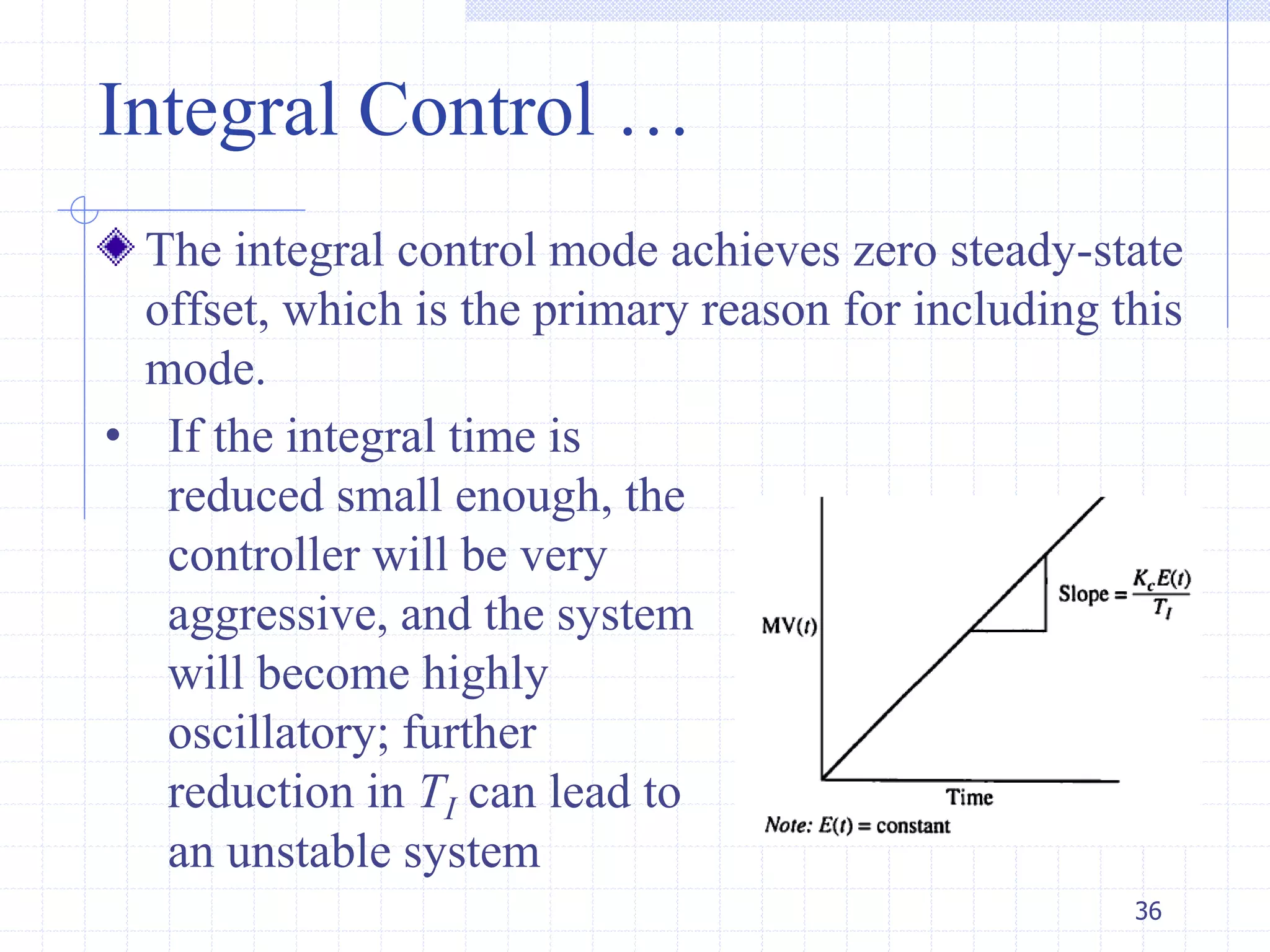
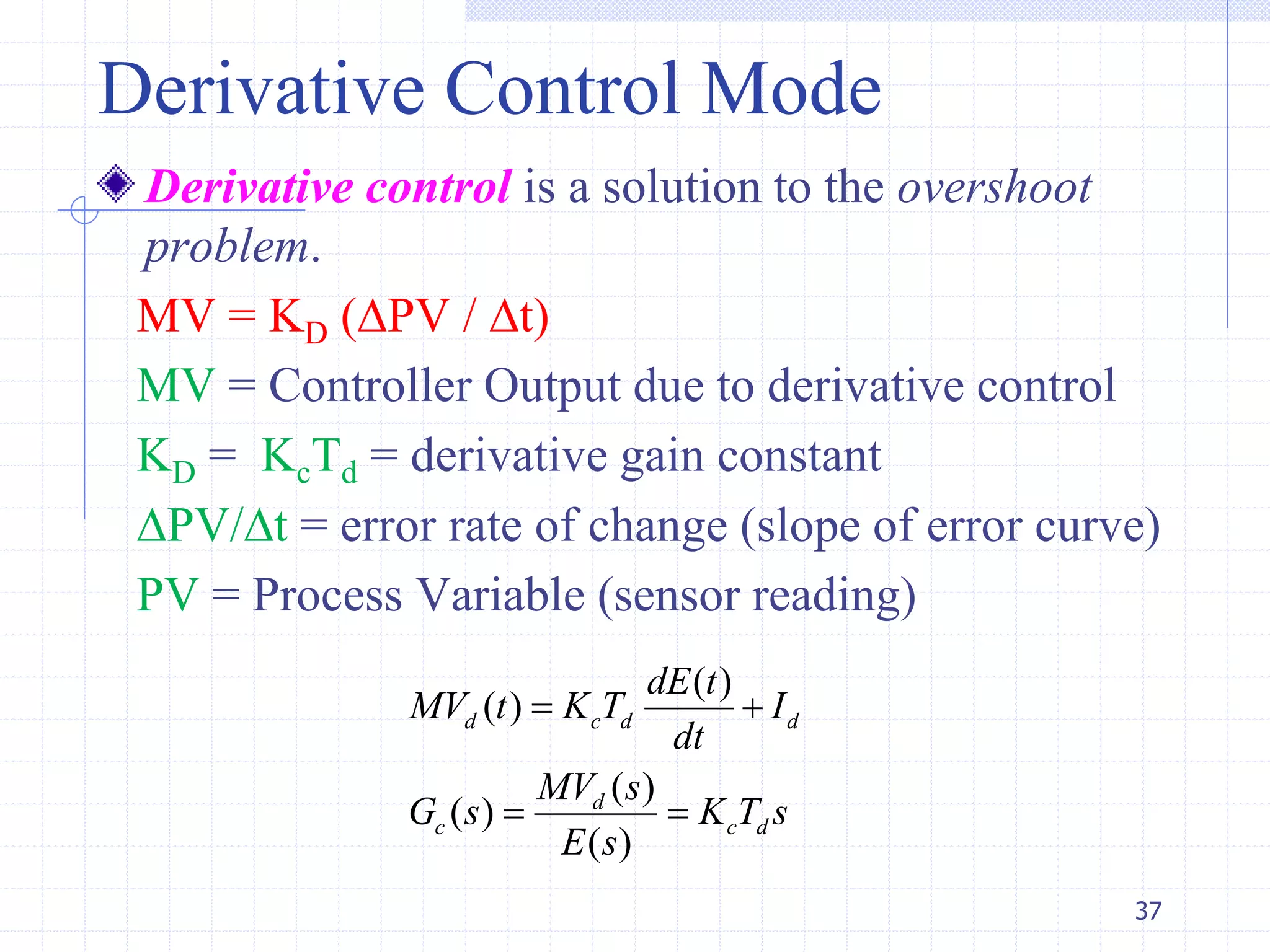
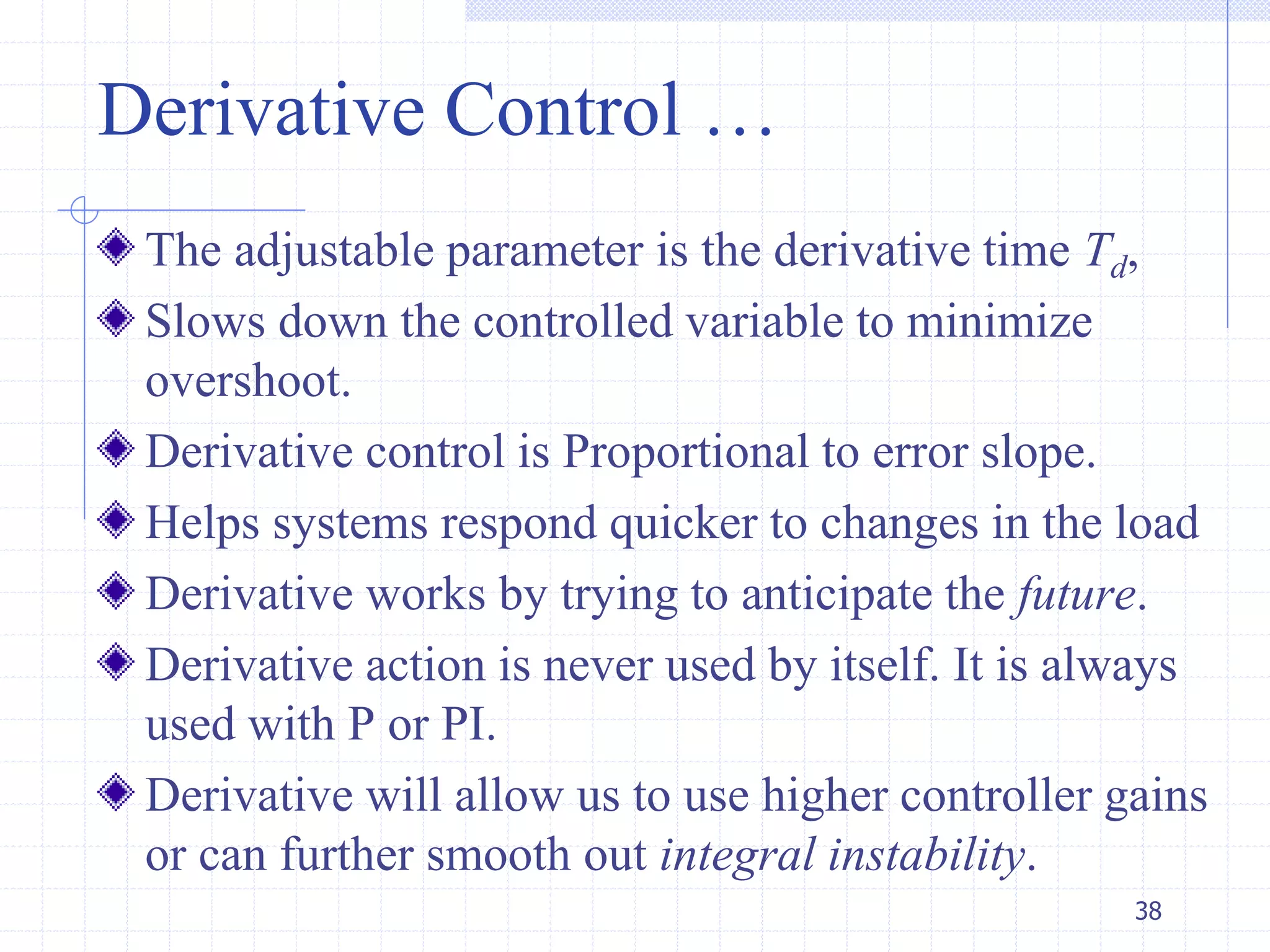
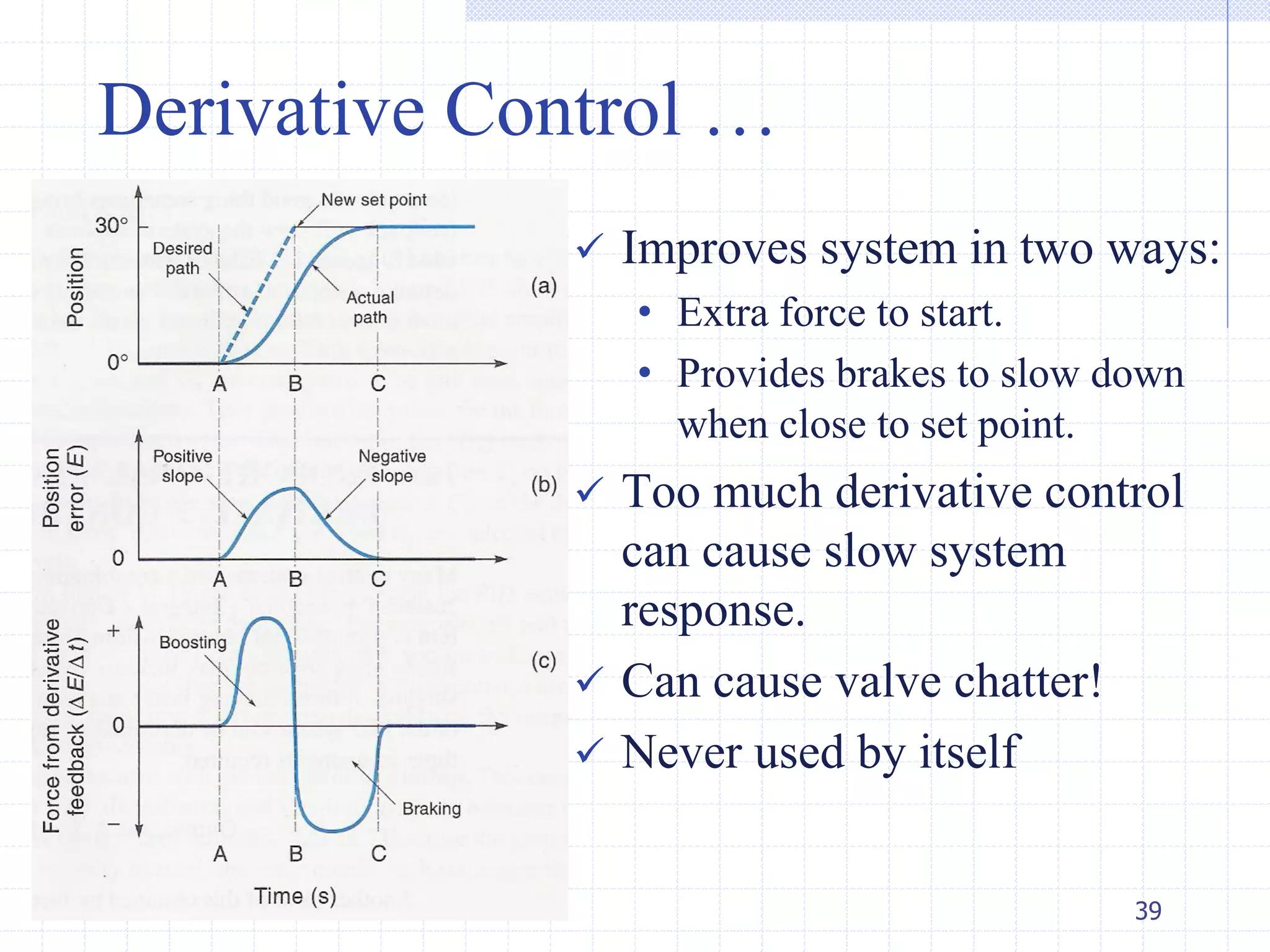
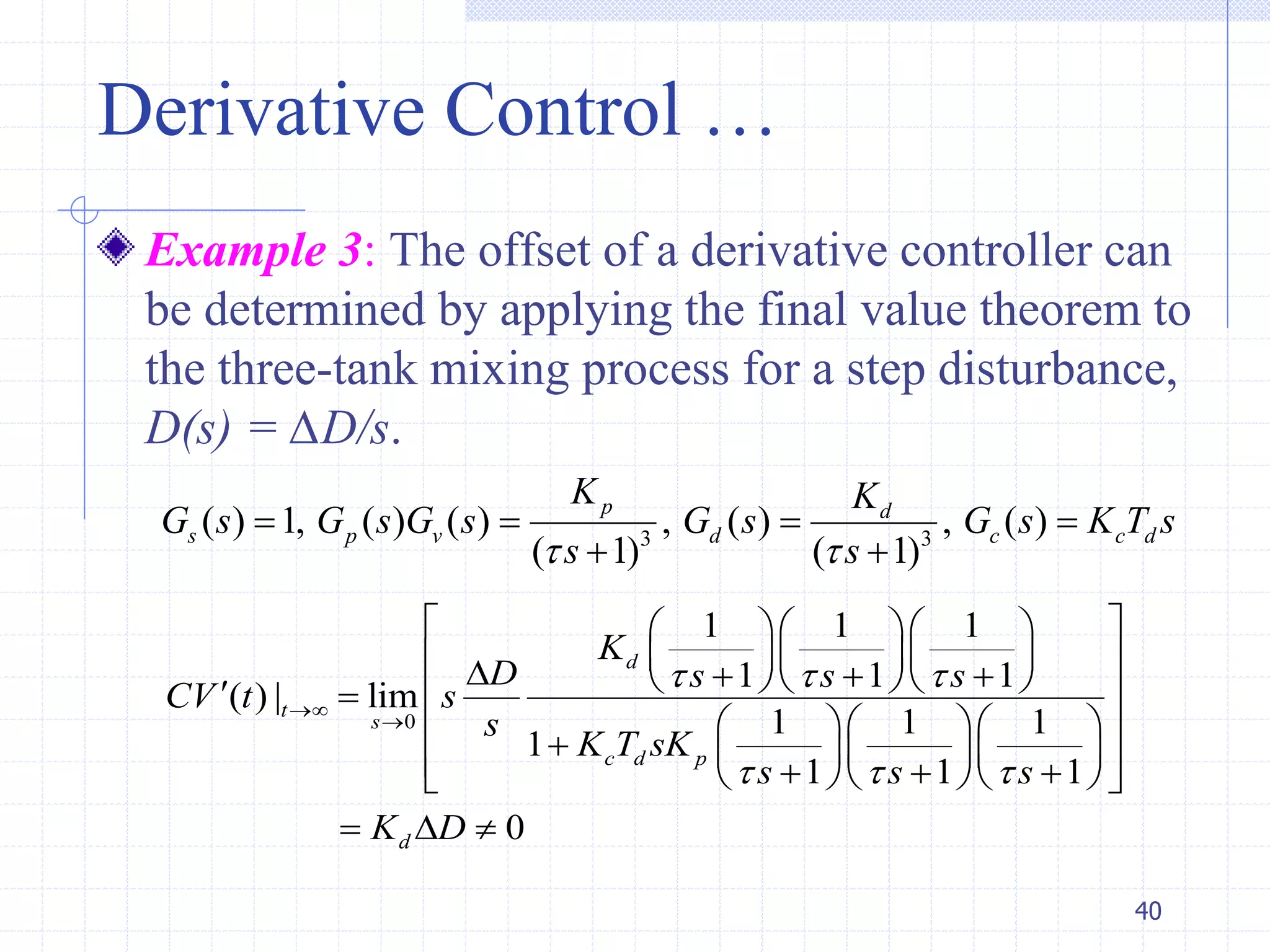
![Proportional-Integral Control
Creates a restoring force that is proportional to the
sum of all past errors multiplied by time.
Where as proportional control works in the present,
integral action works in the past.
PI control is used for fast responding processes that
require offset free operation.
MV = Kc [E + 1/TI (Et)]
41
0
1
( ) ( ) ( )
( ) 1
( ) 1
( )
t
c
I
c c
I
MV t K E t E t dt I
T
MV s
G s K
E s T s
](https://image.slidesharecdn.com/ep-5512lecture-03-190313233550/75/Ep-5512-lecture-03-41-2048.jpg)
